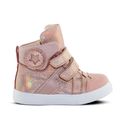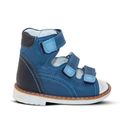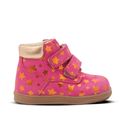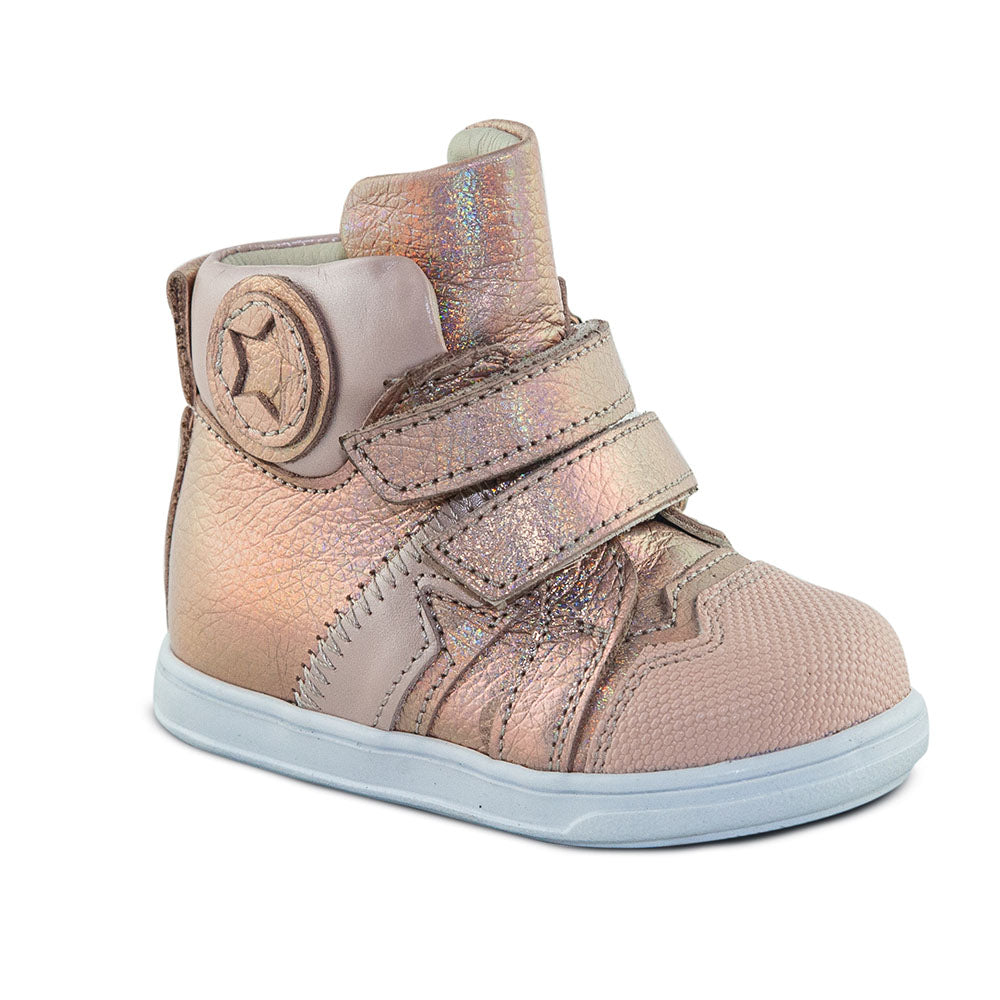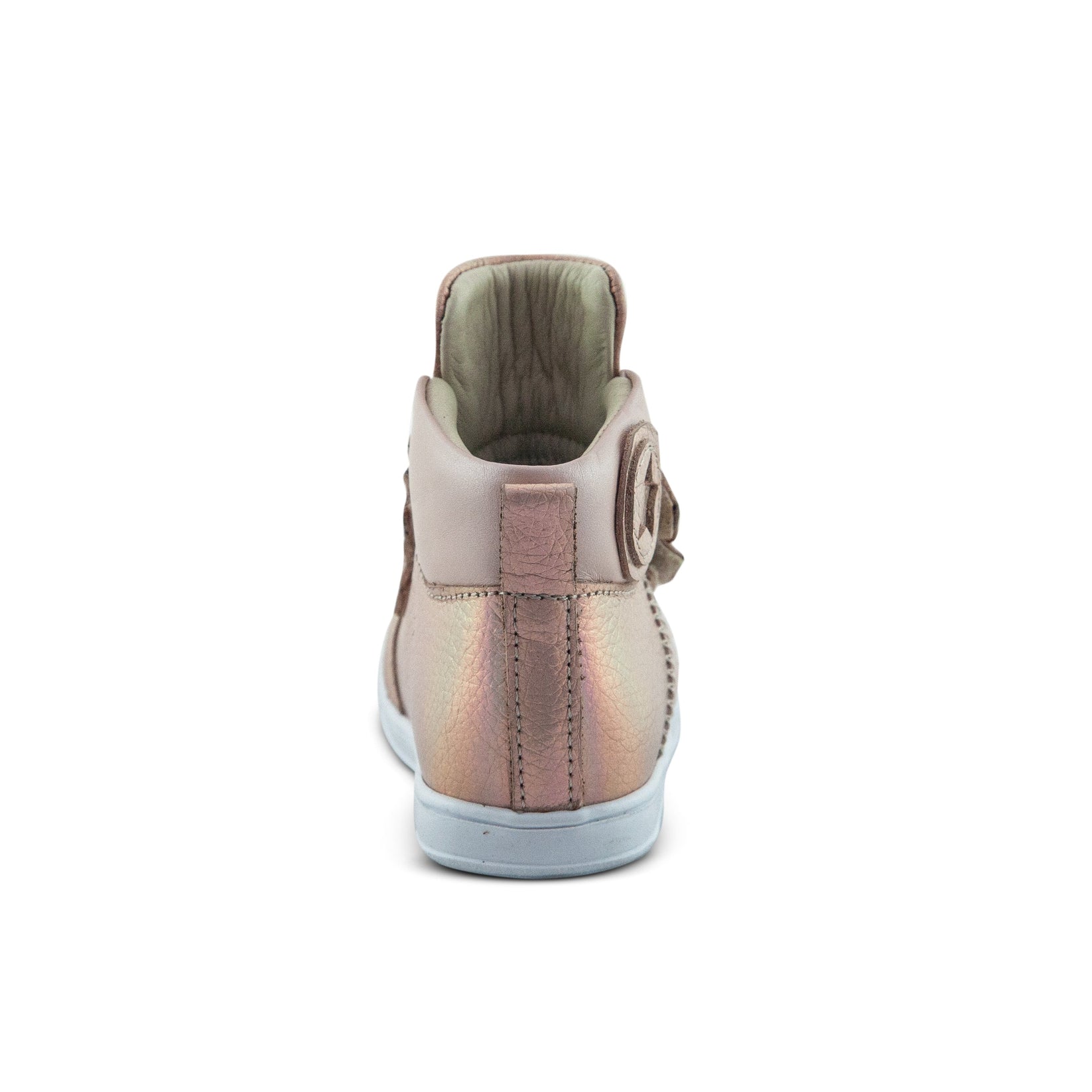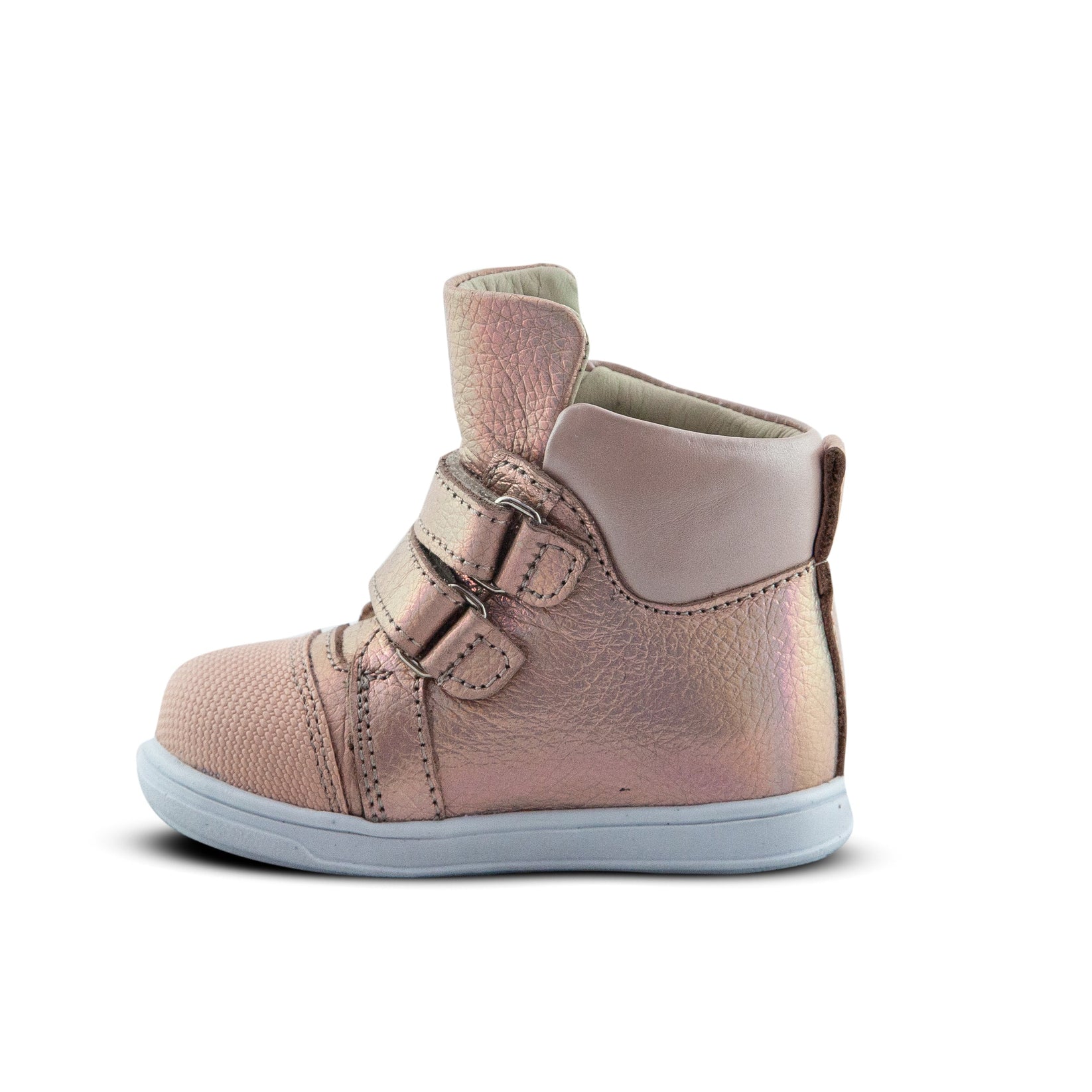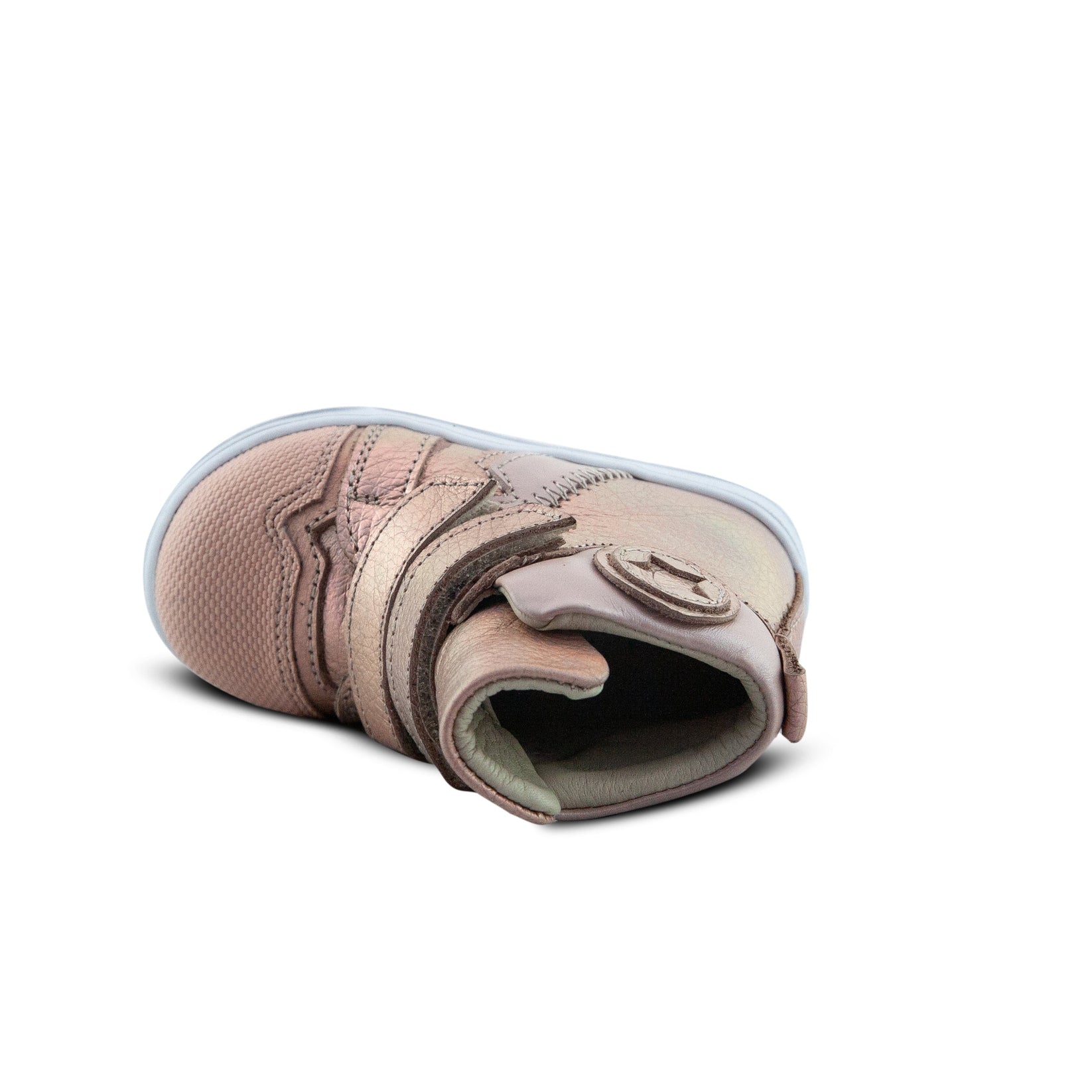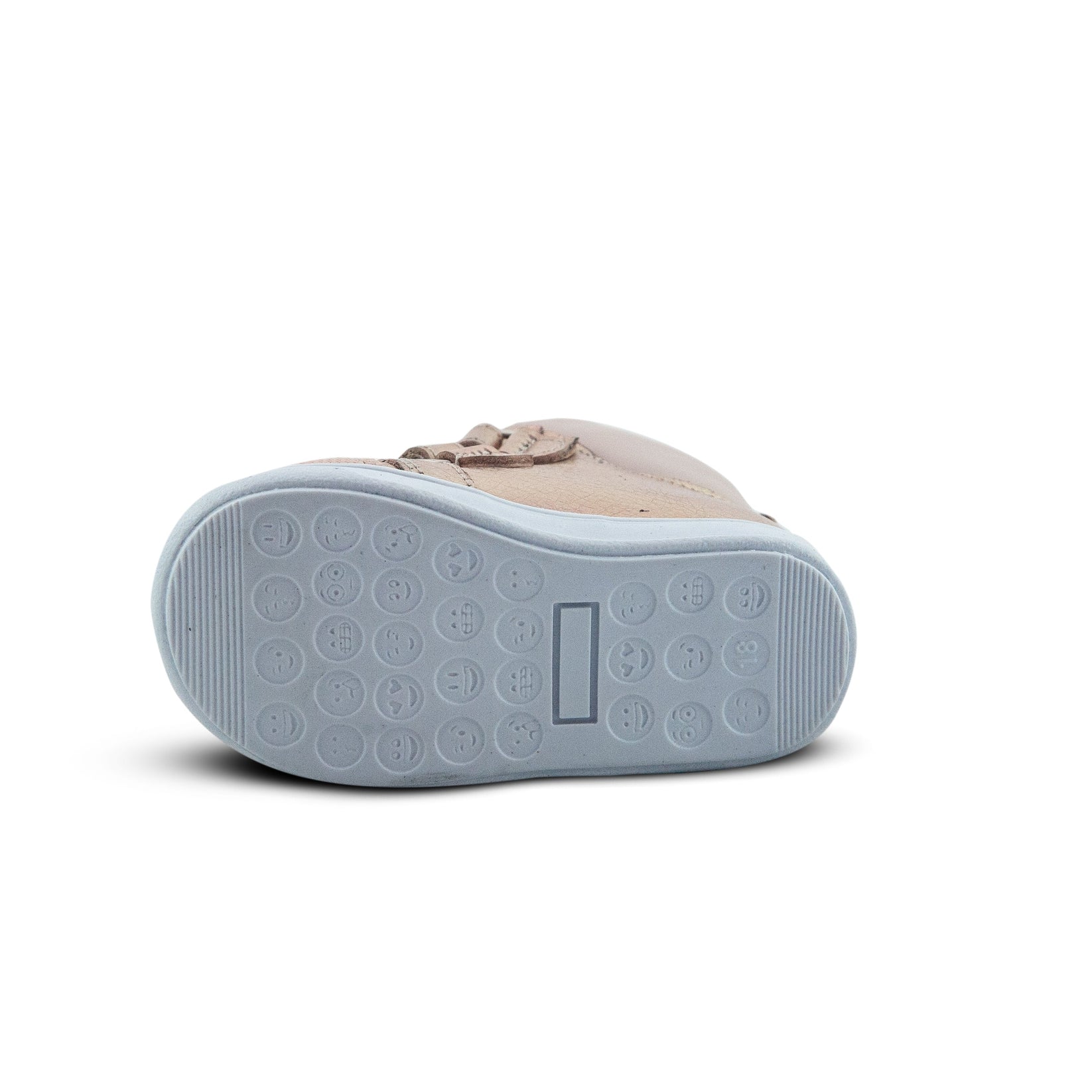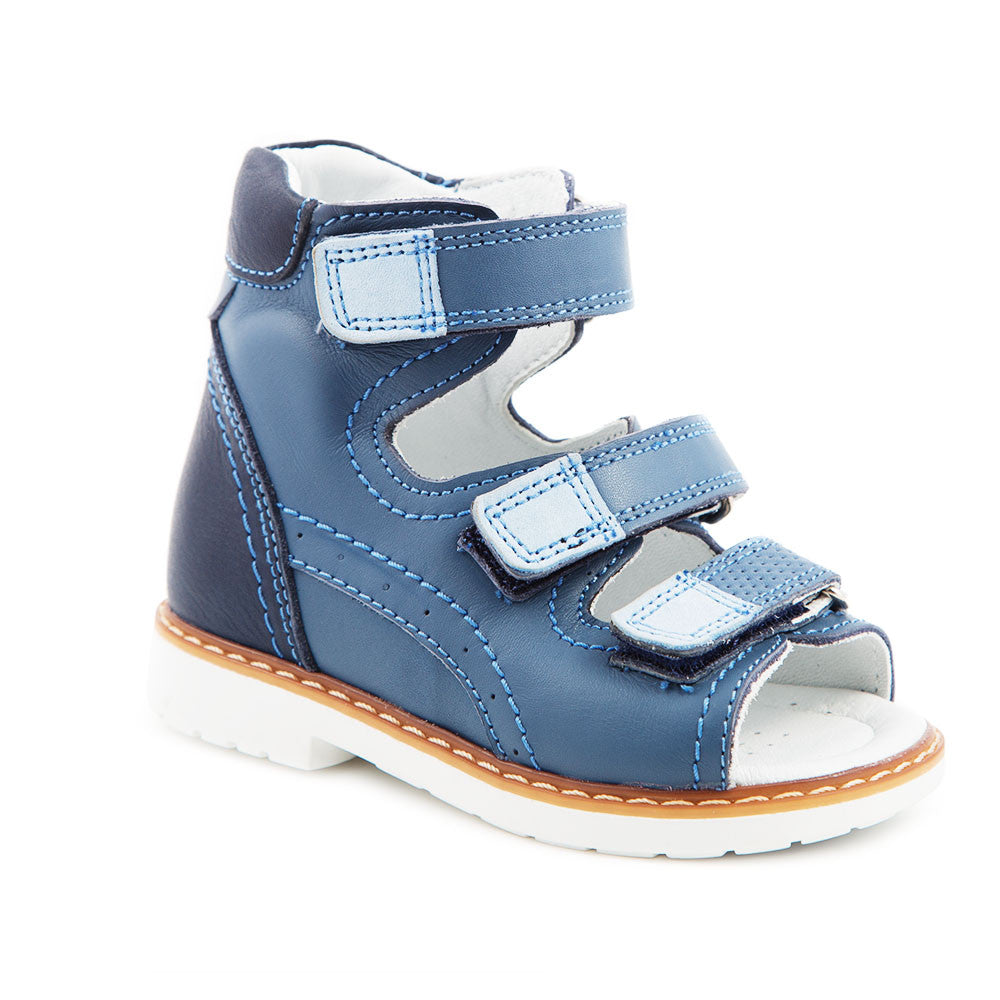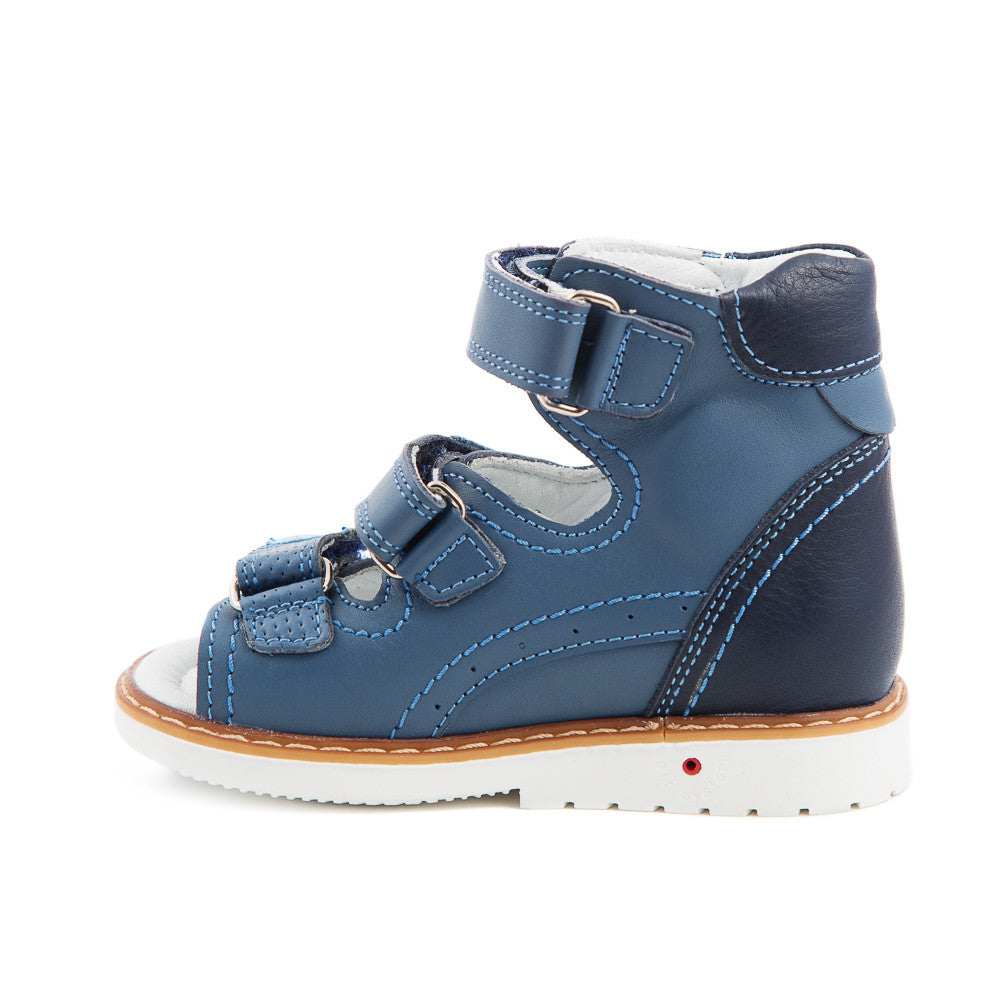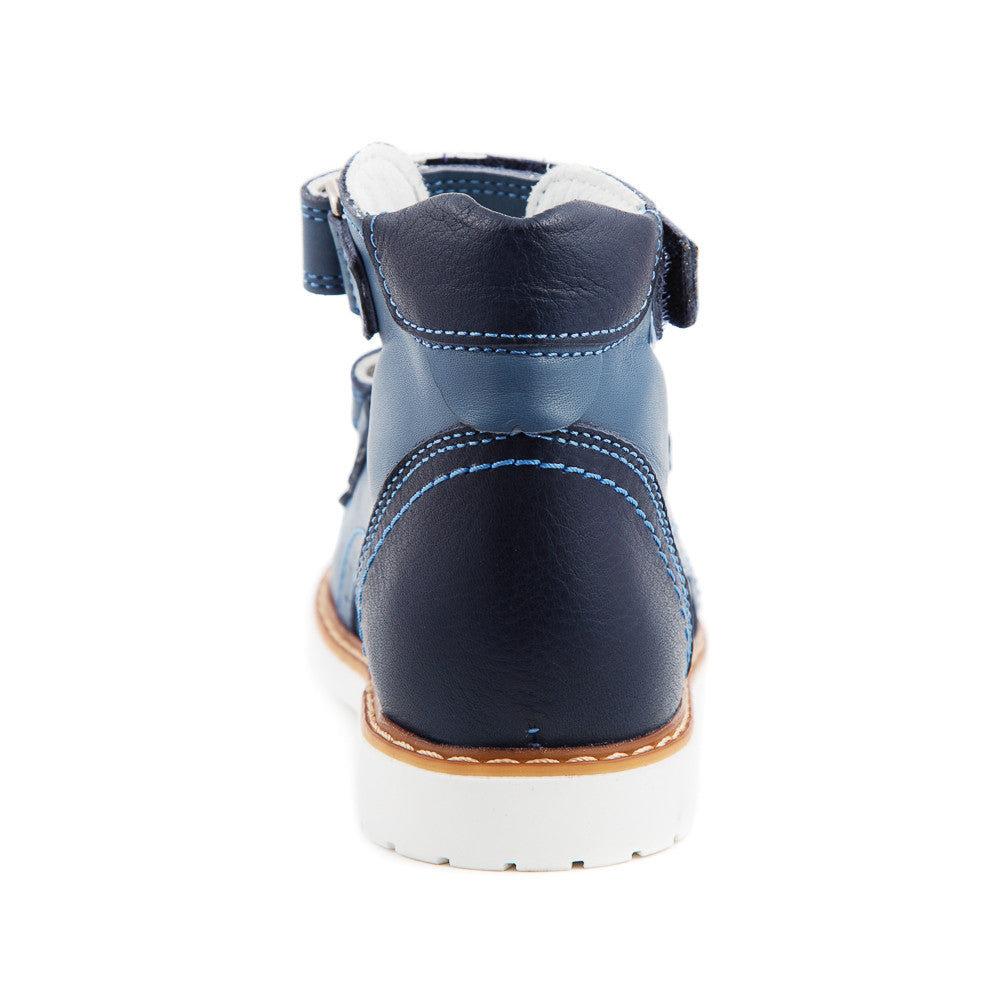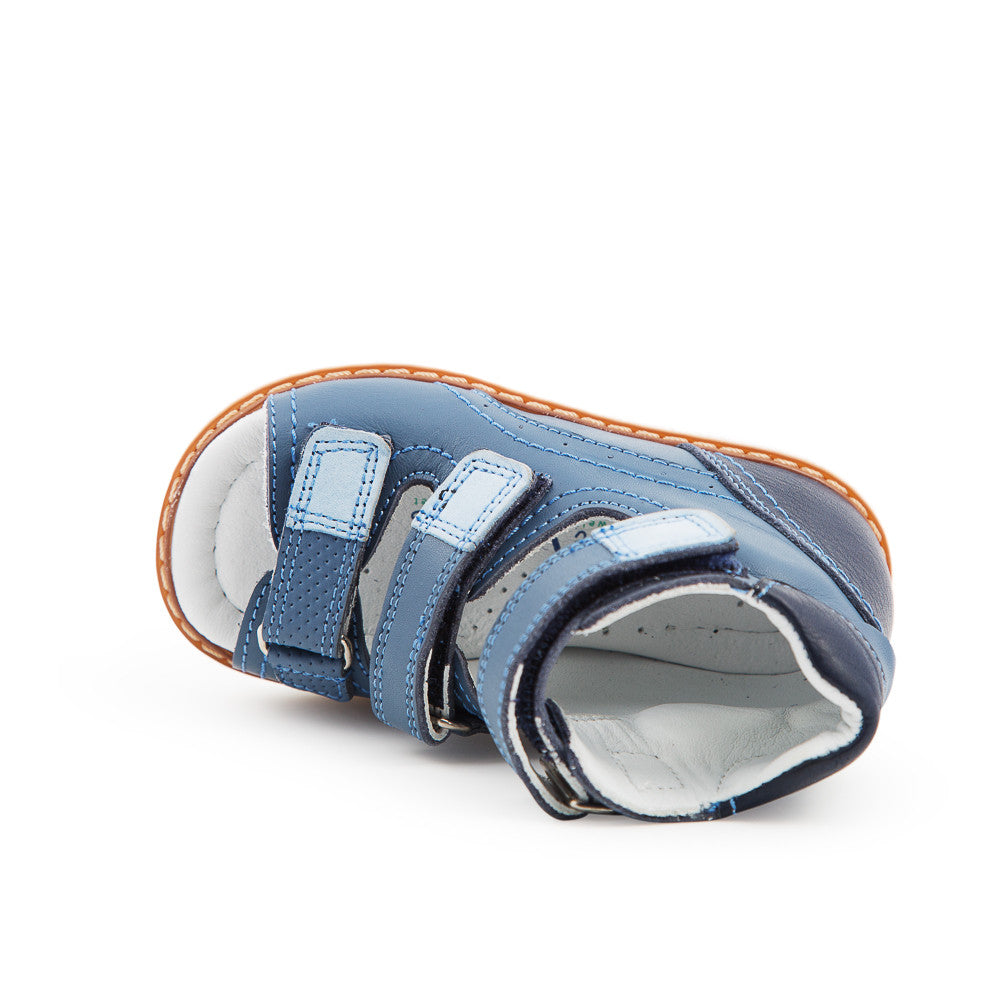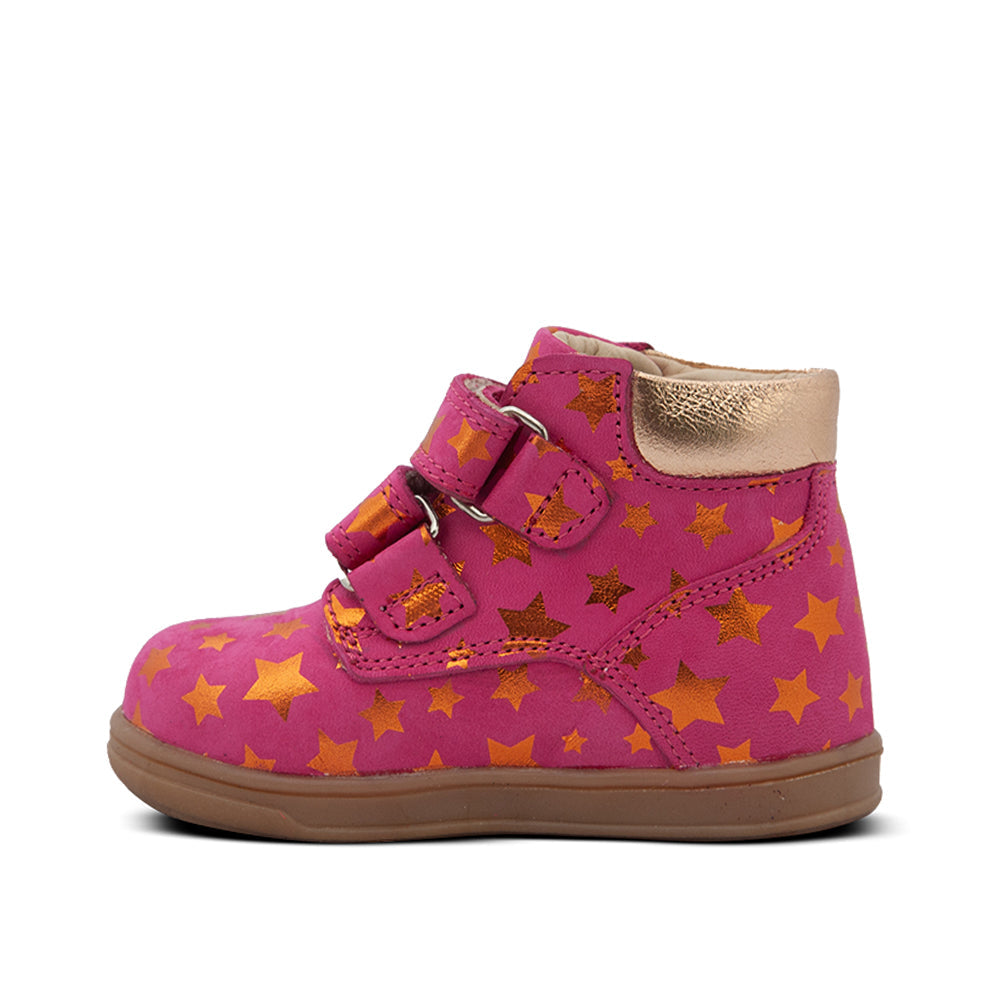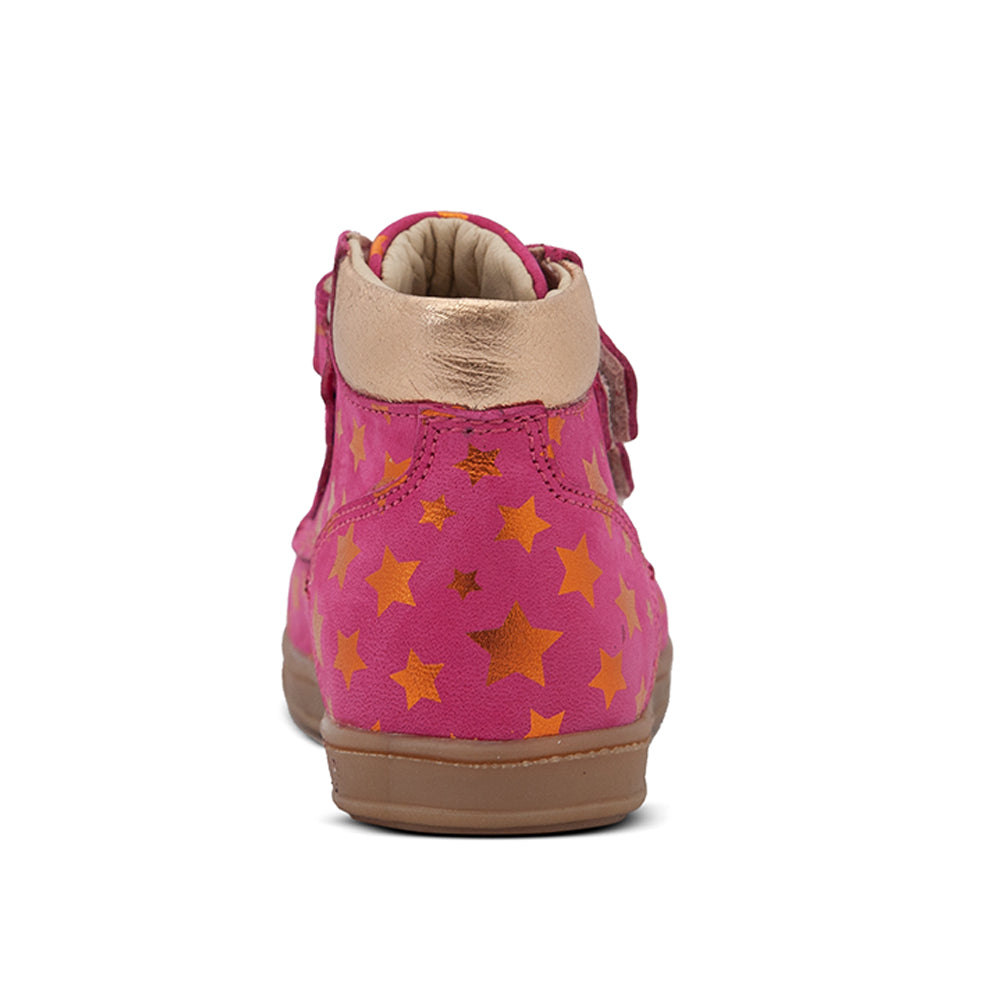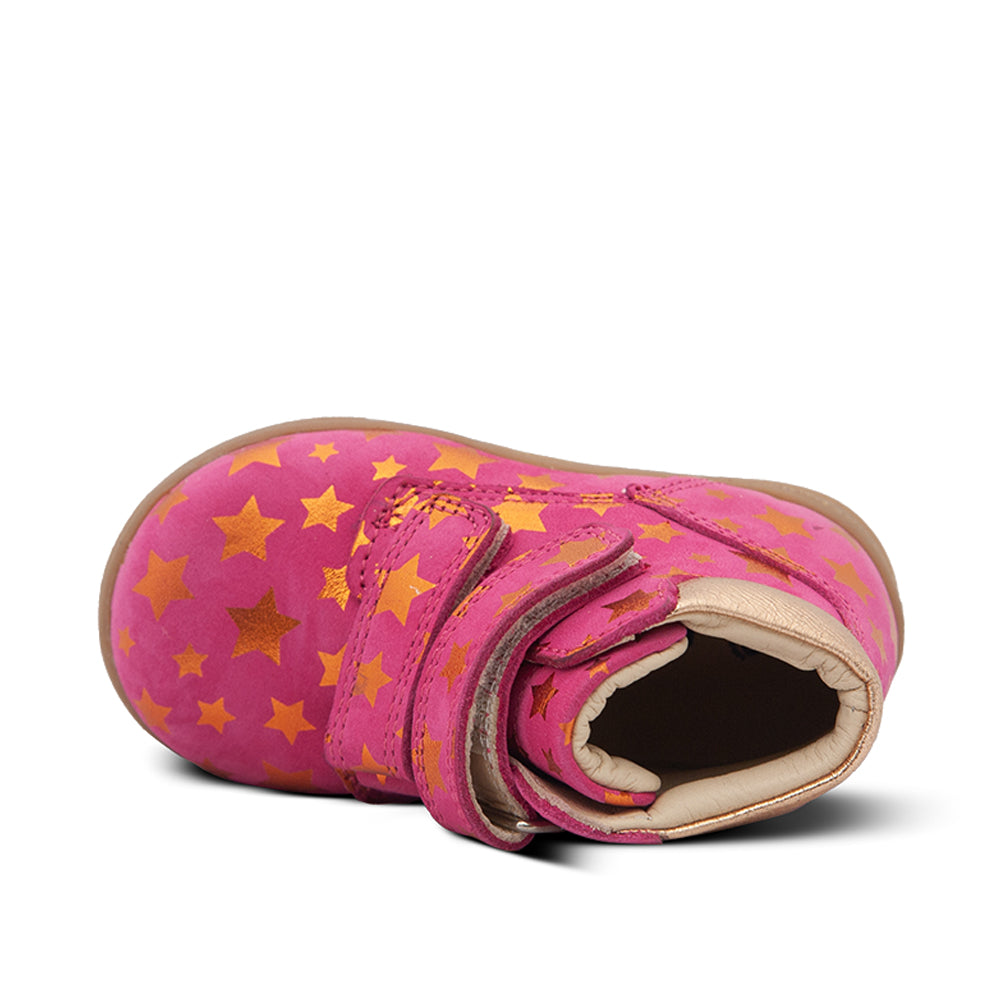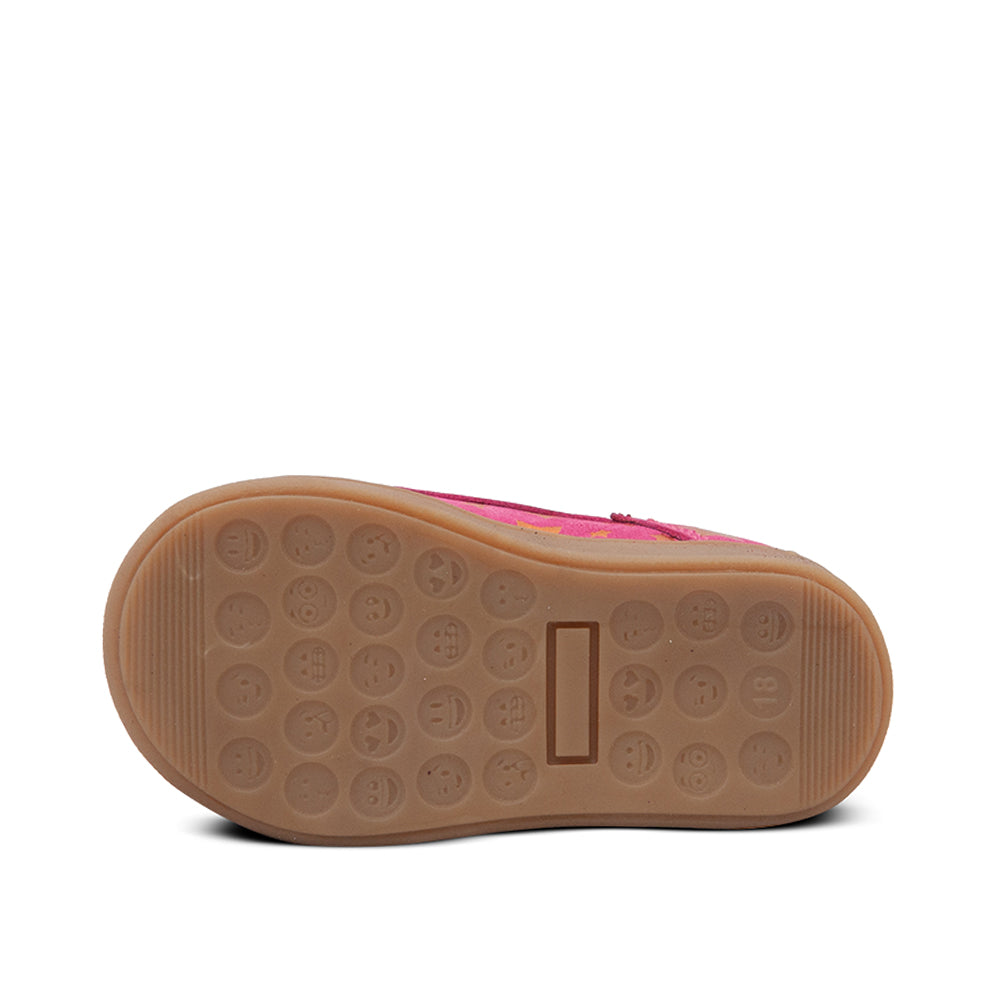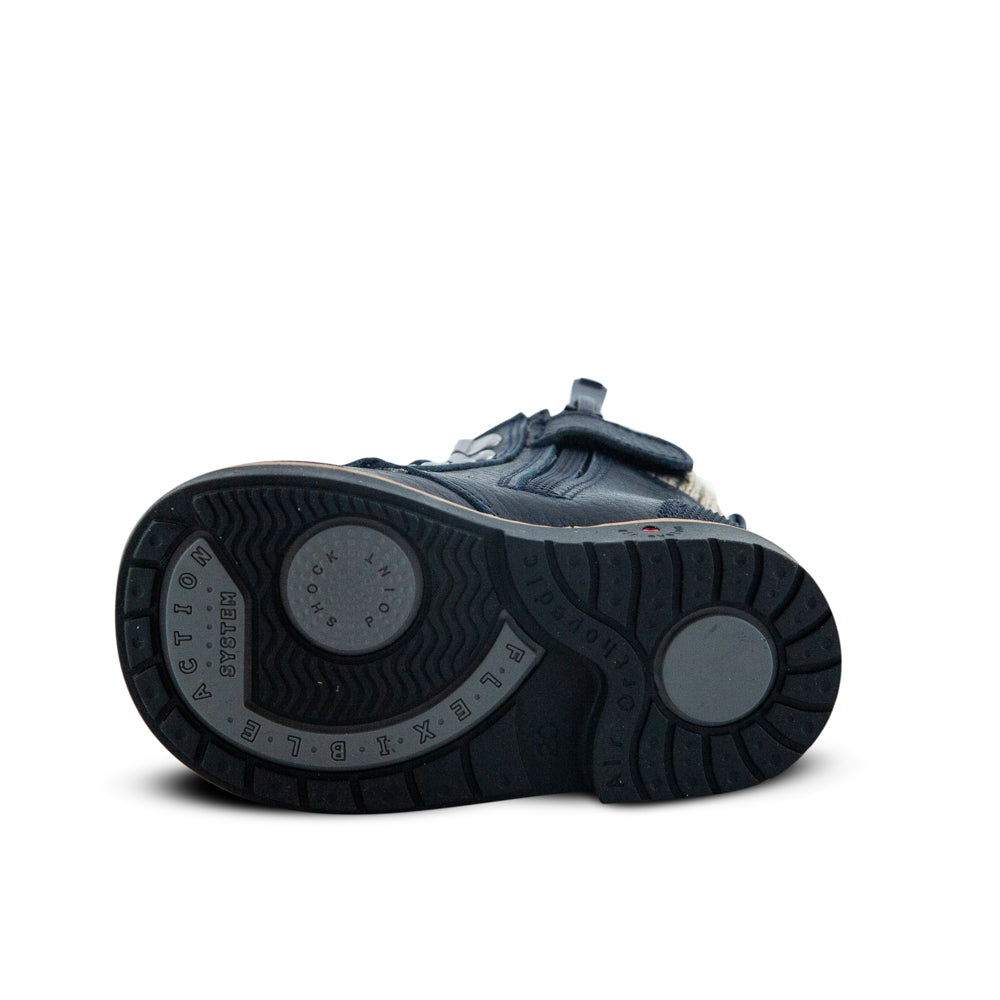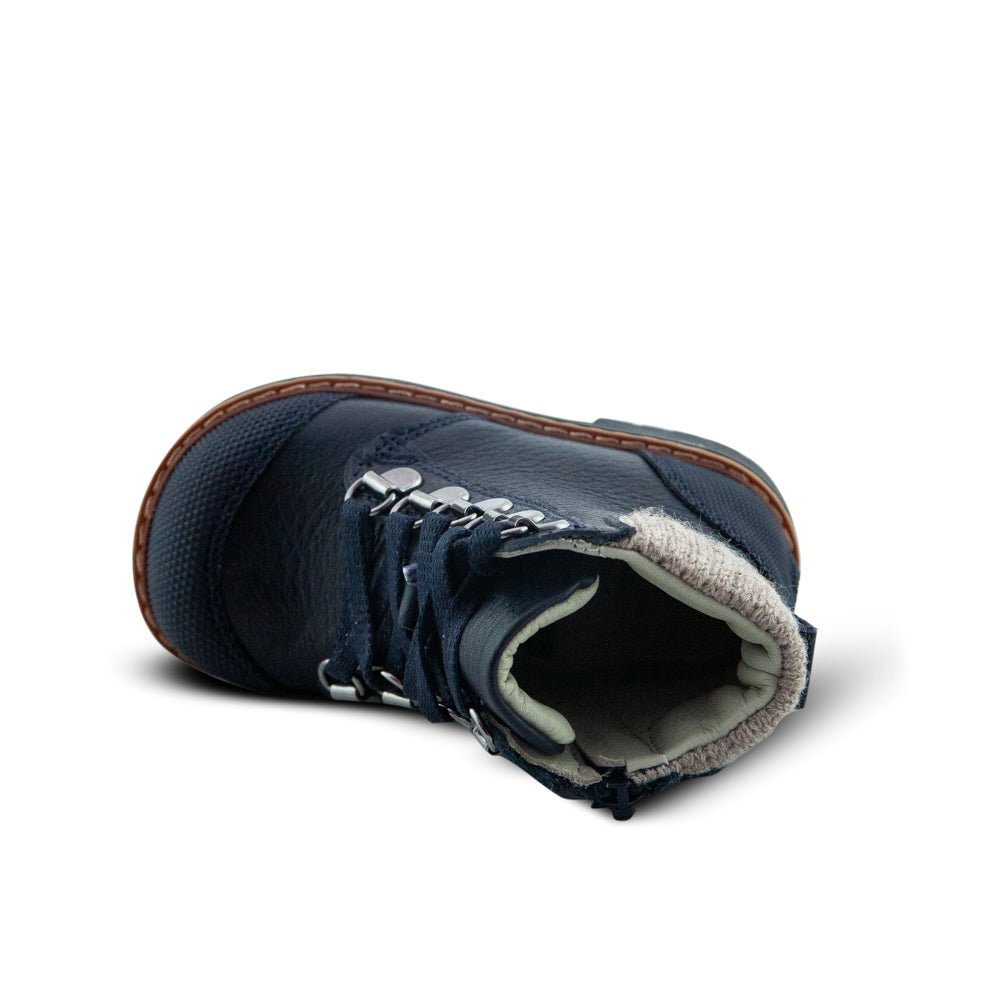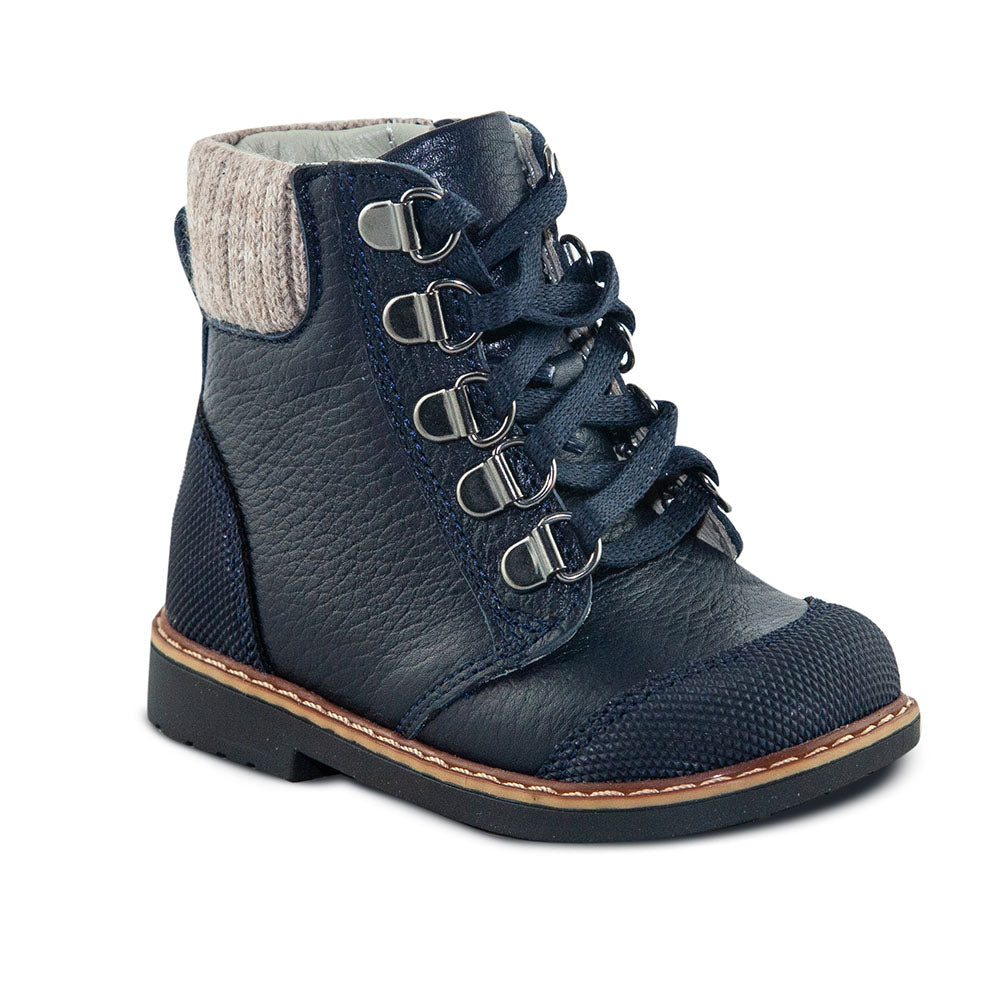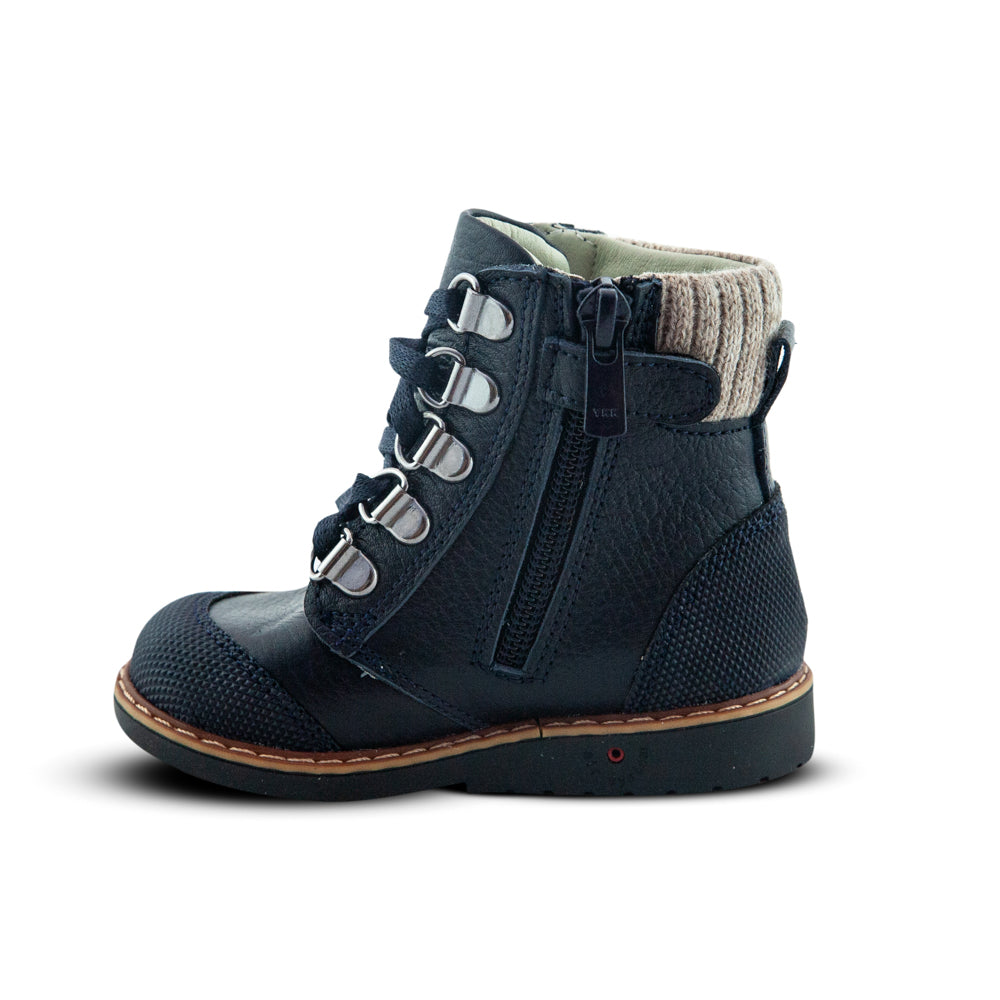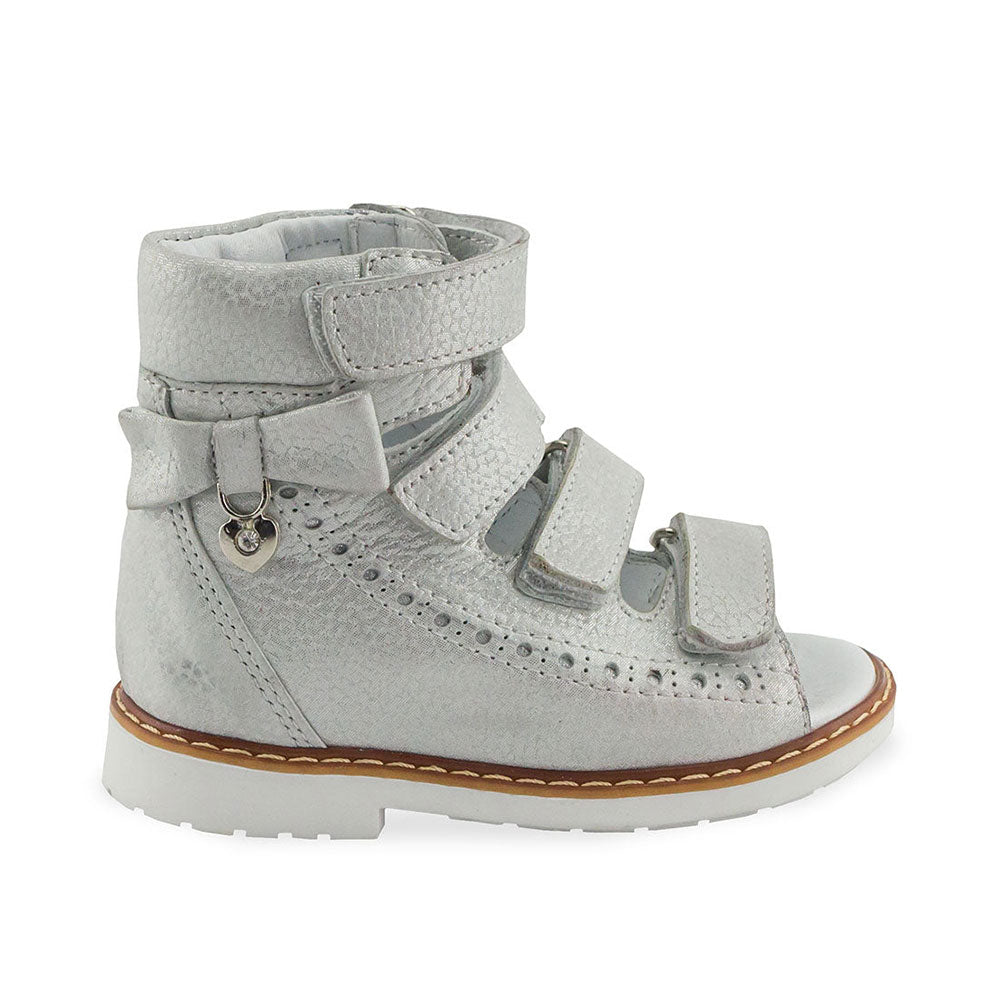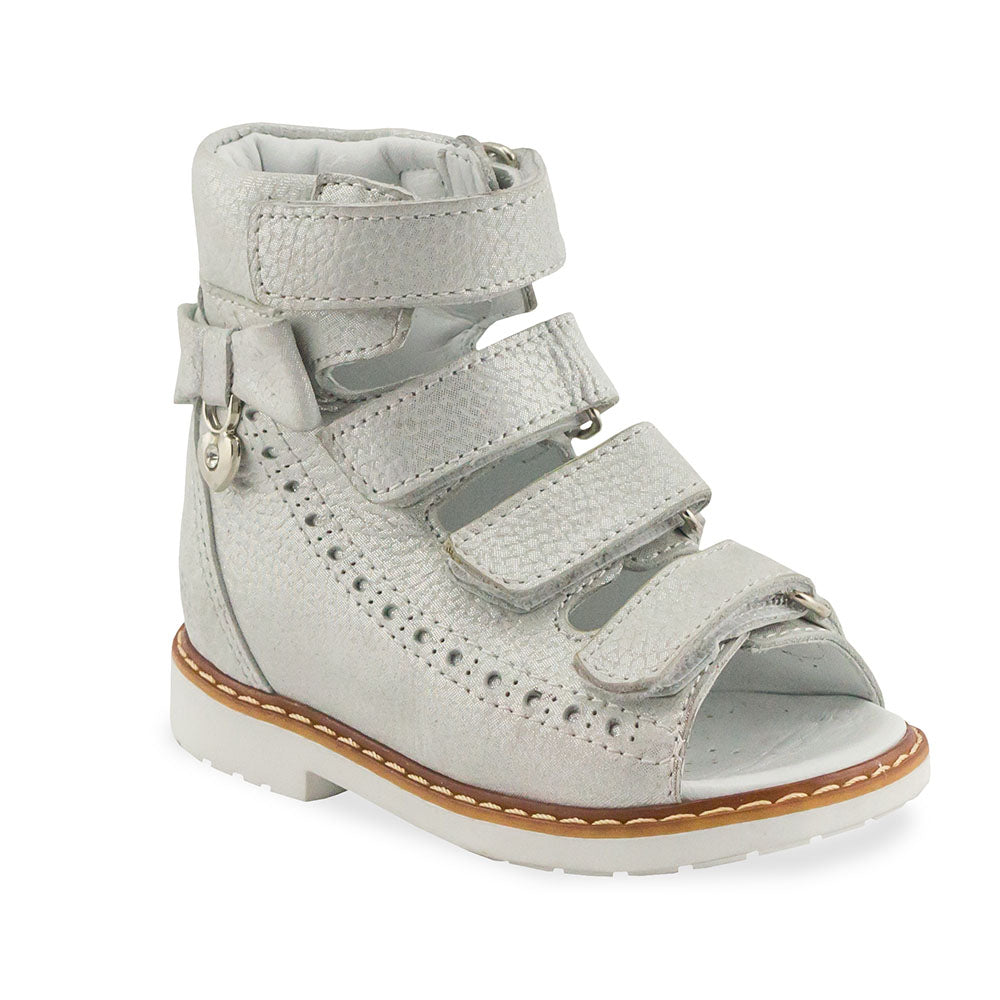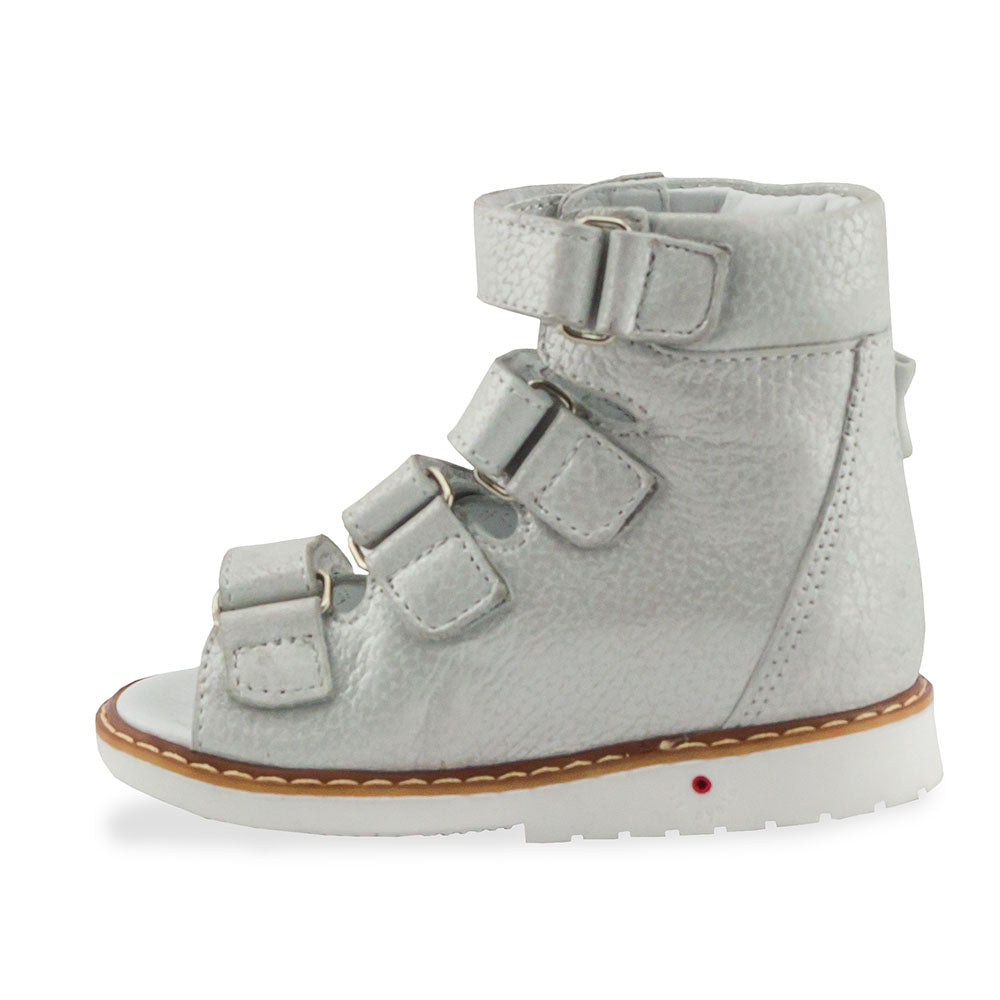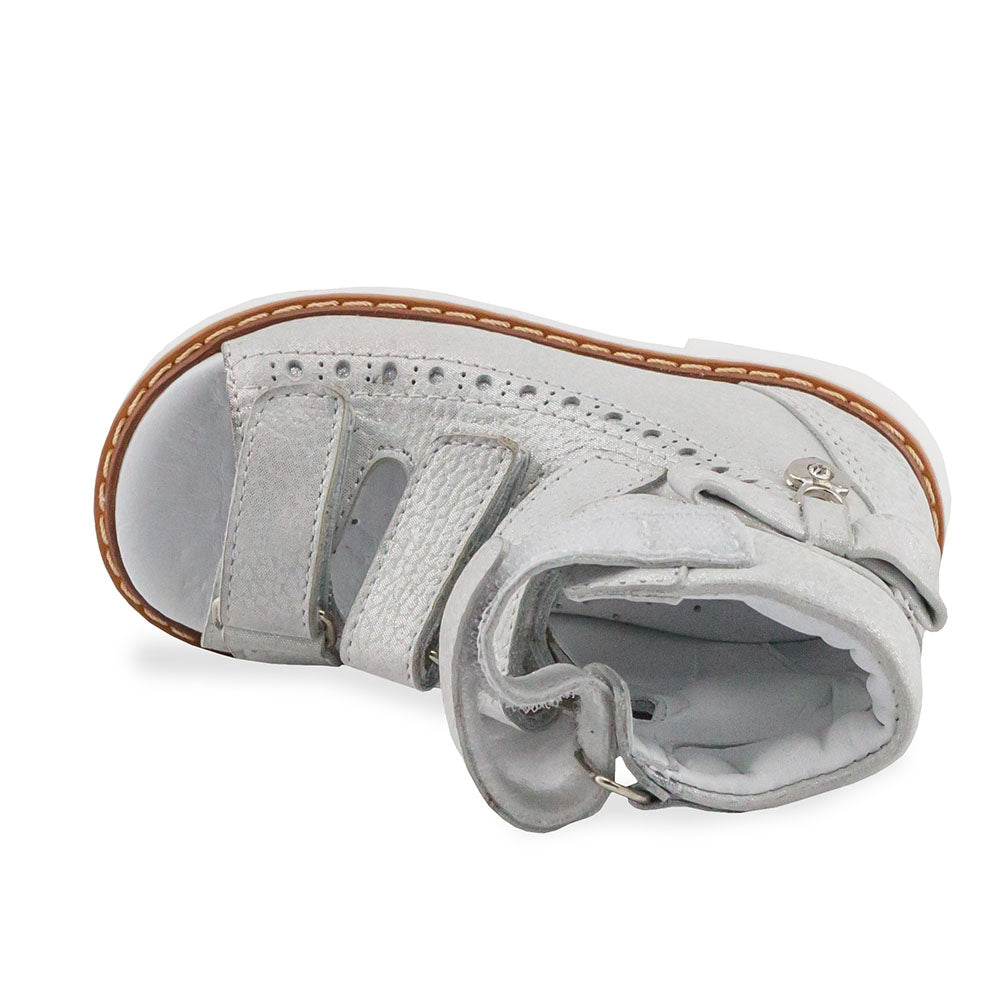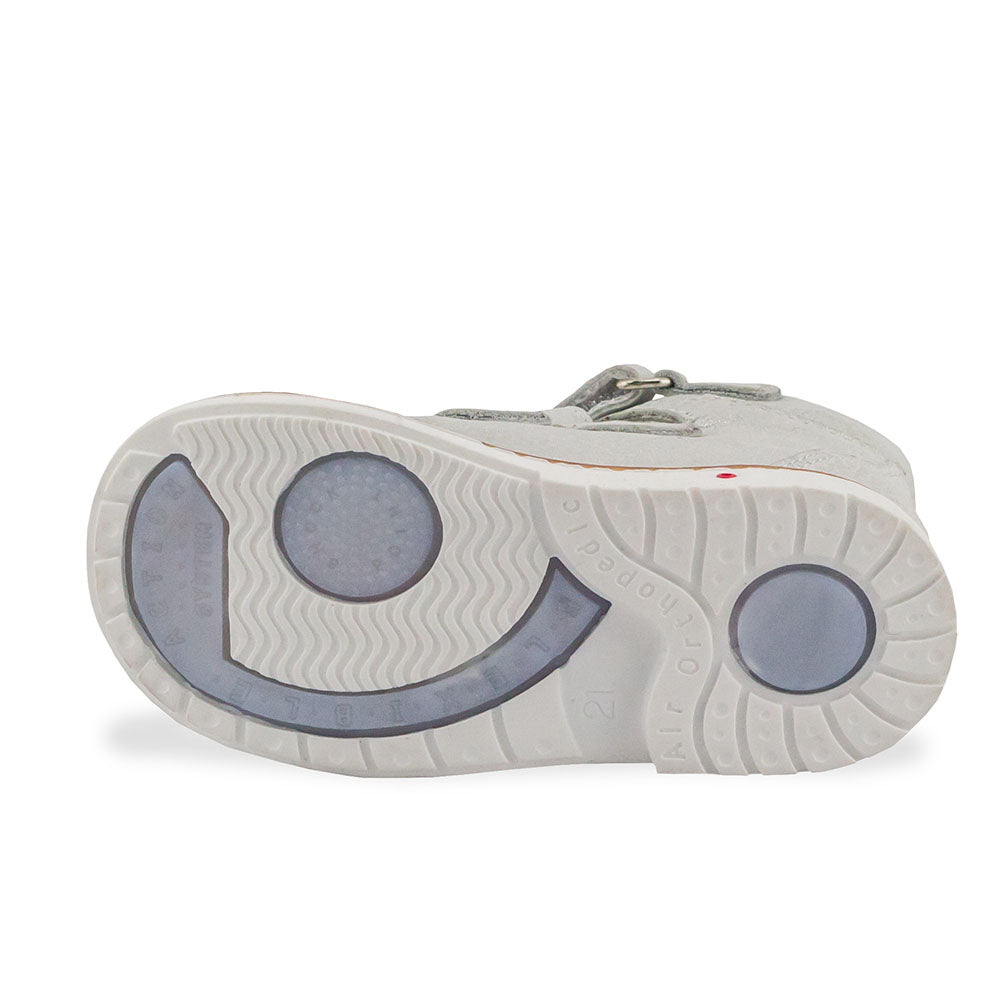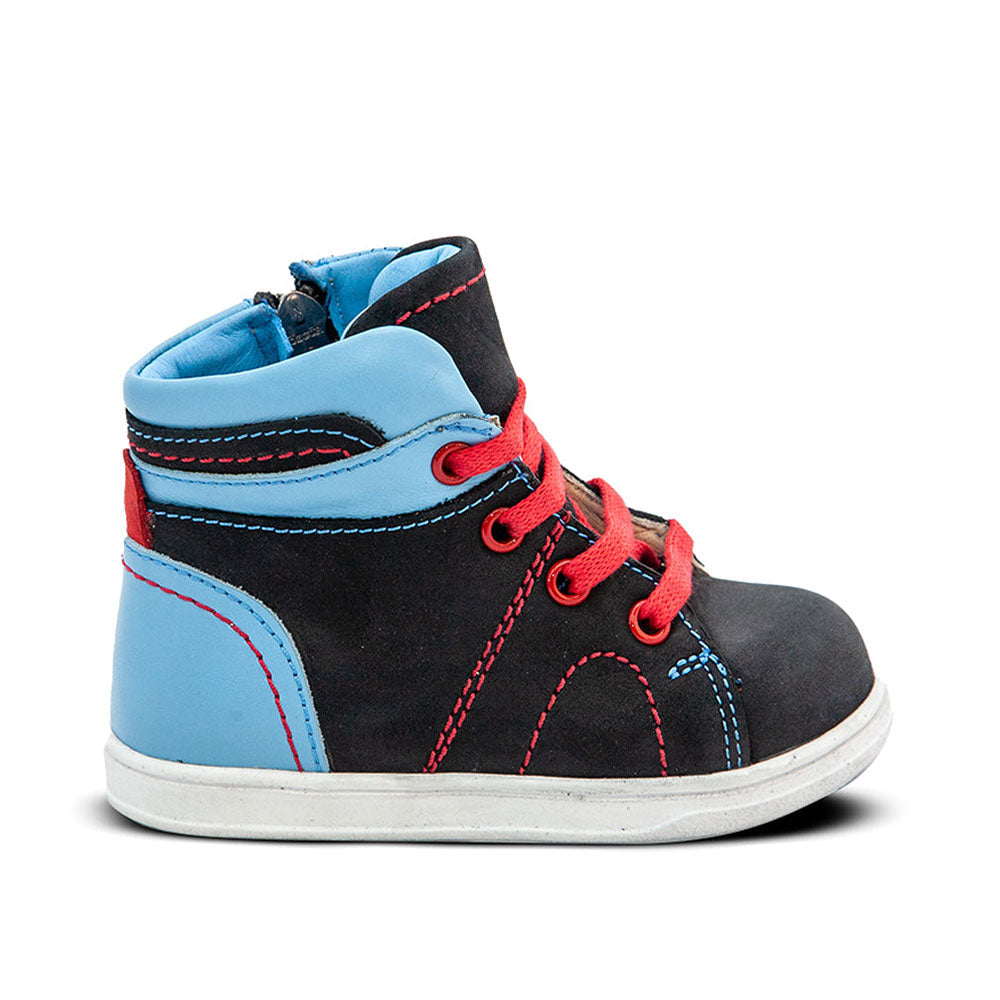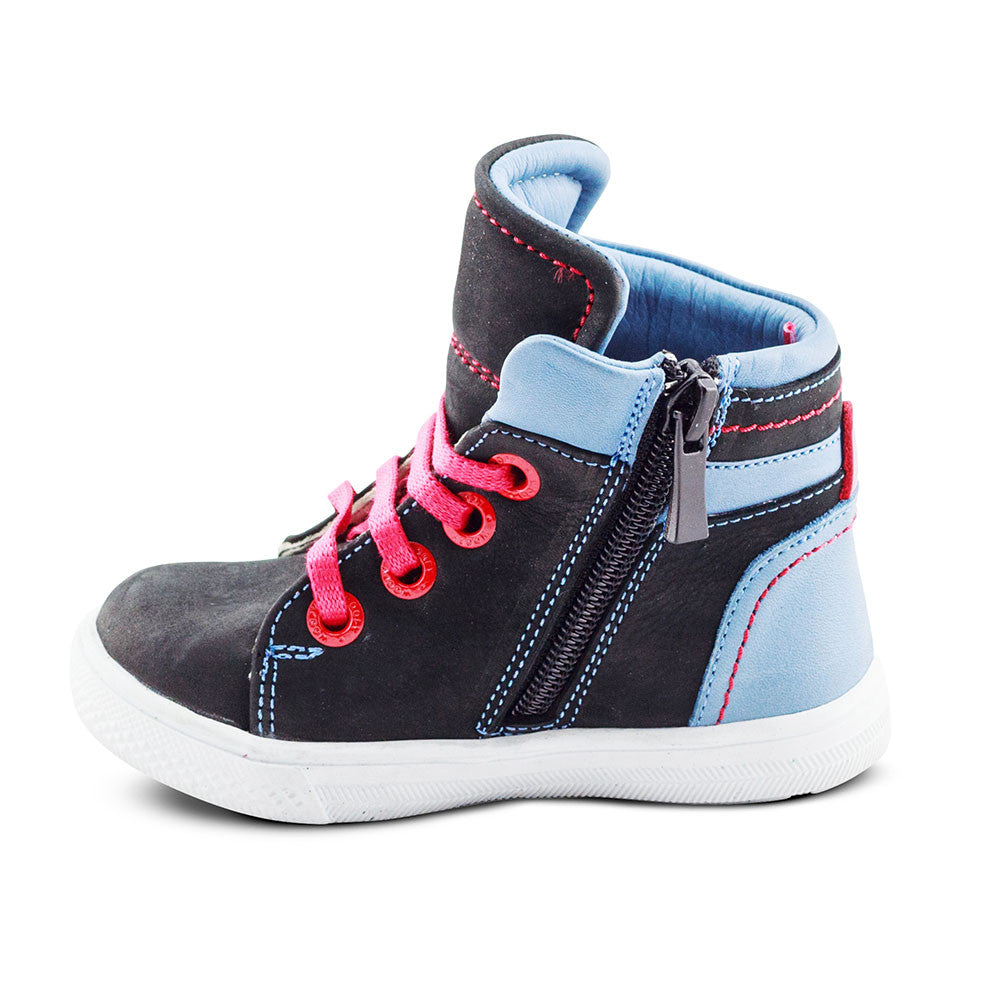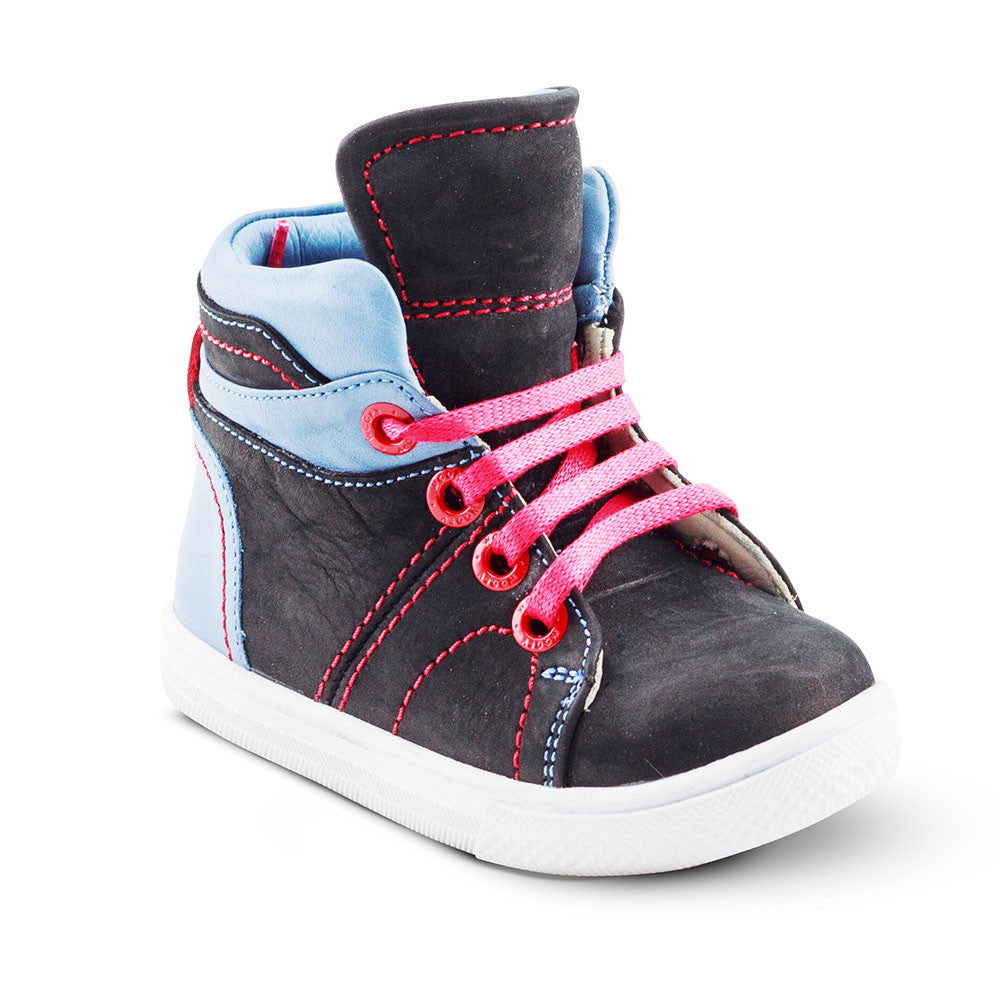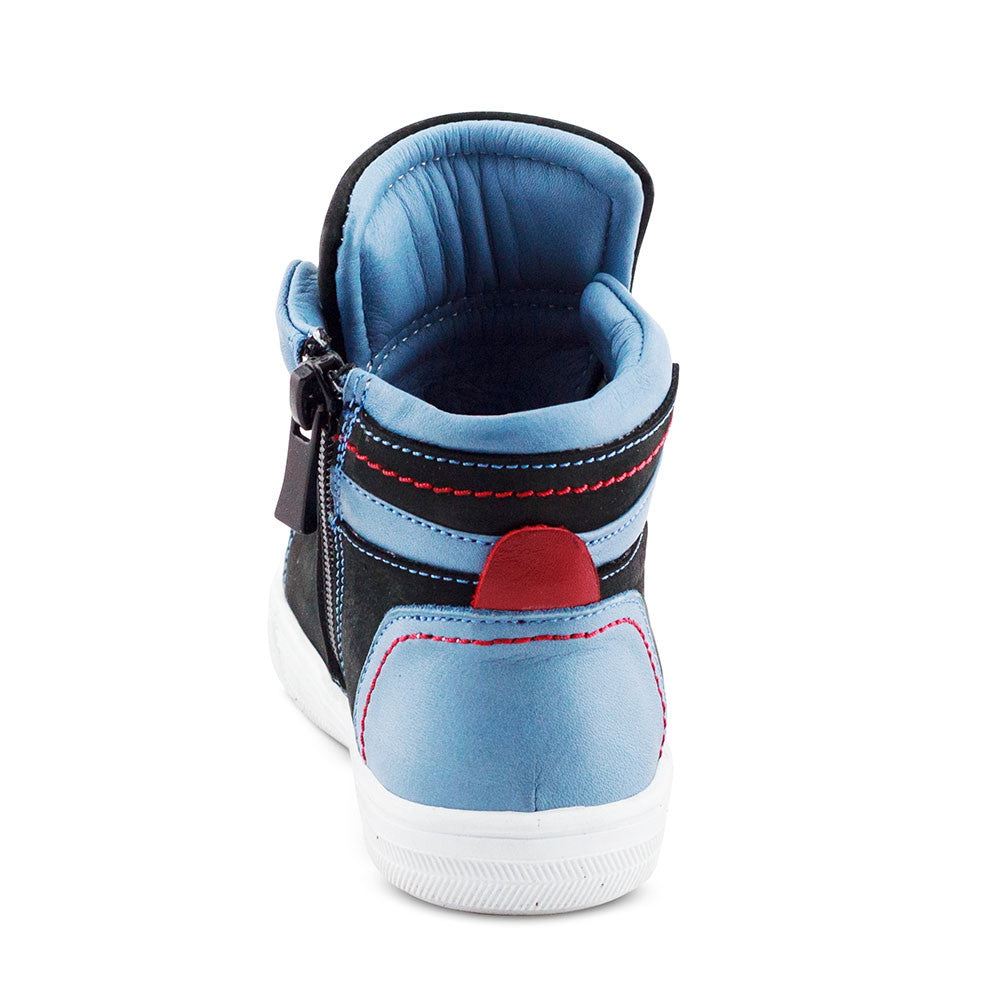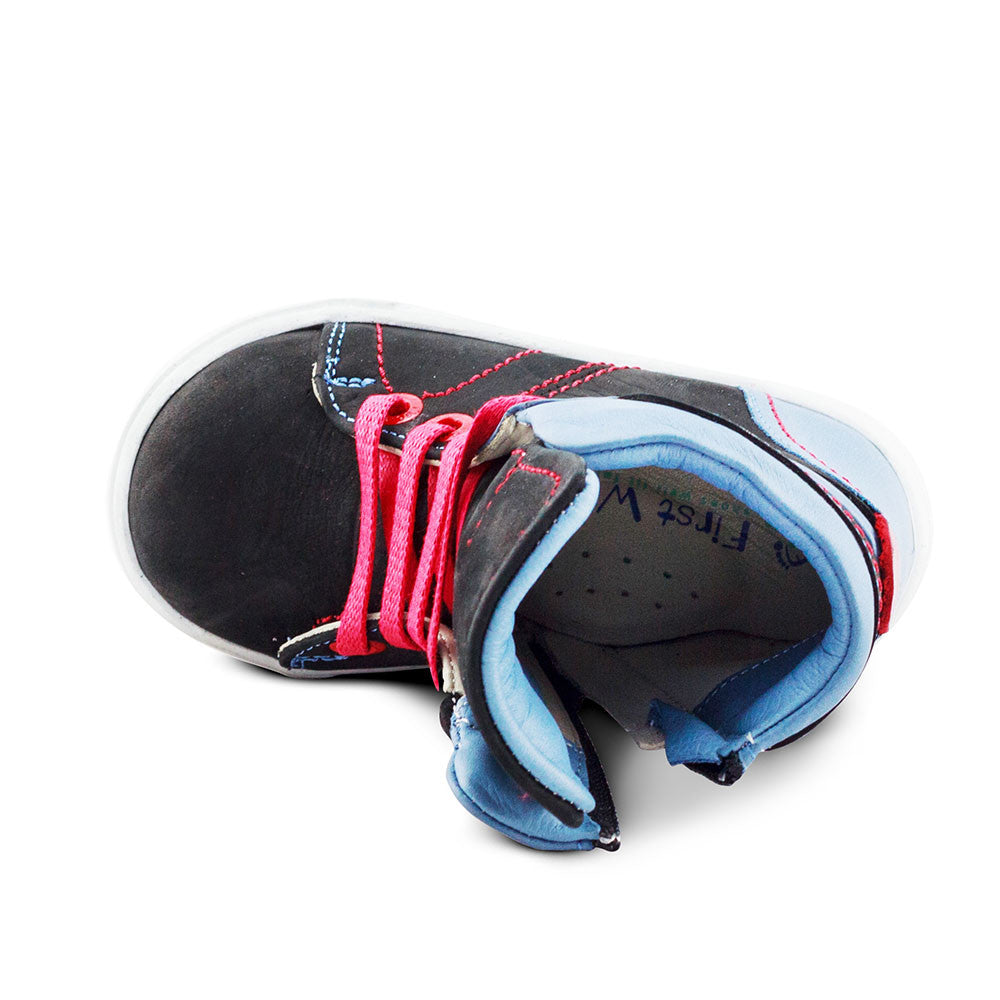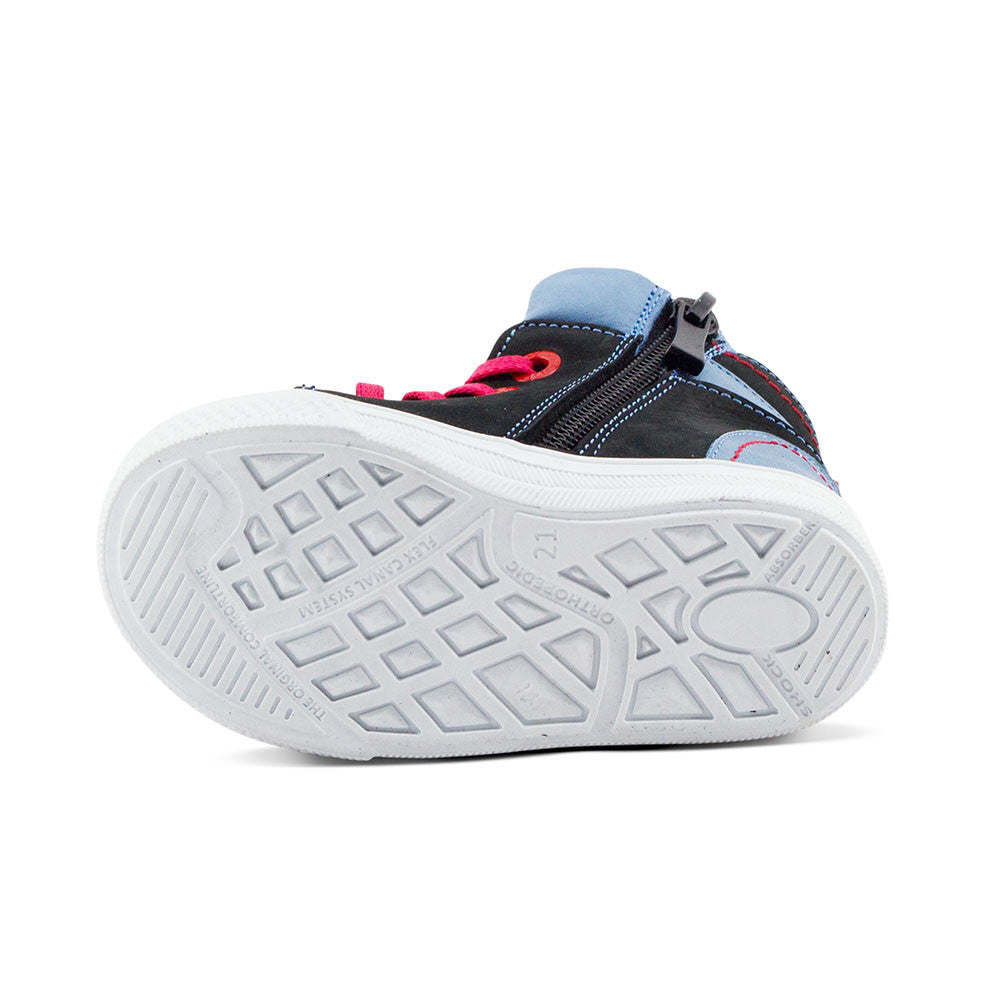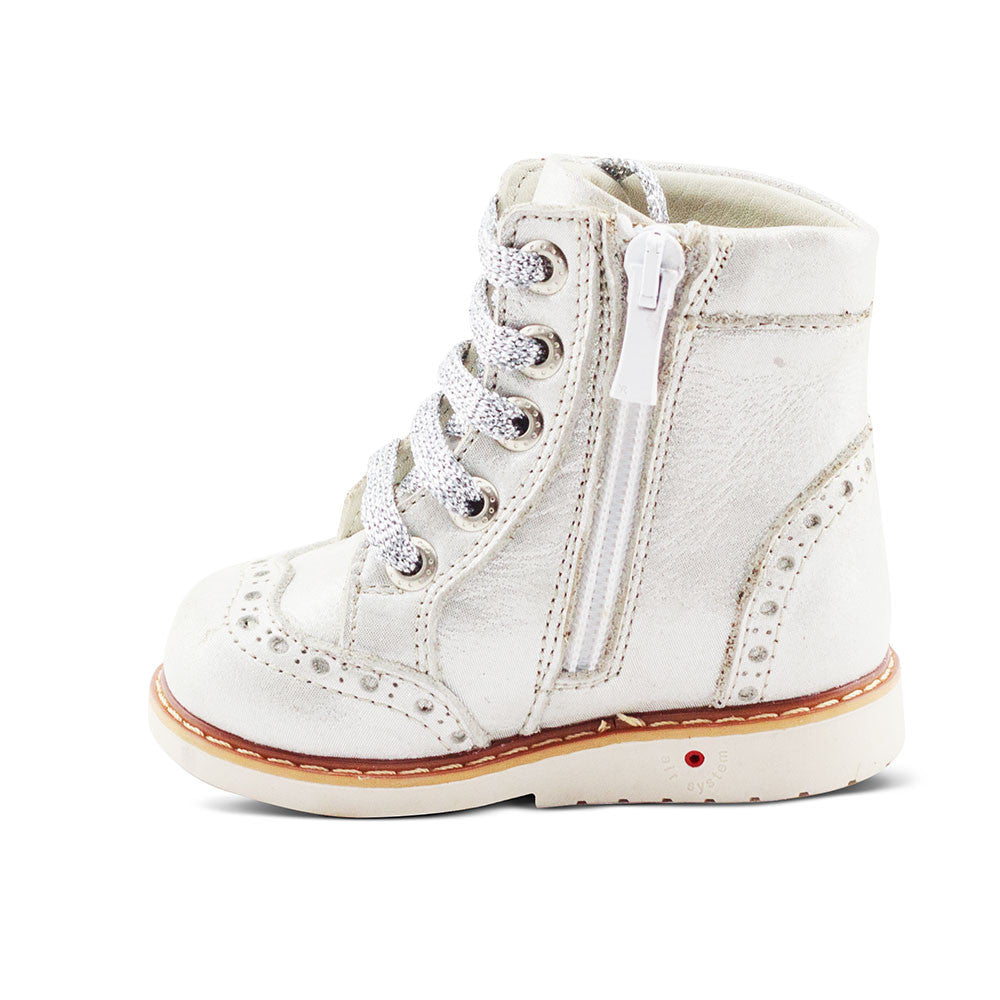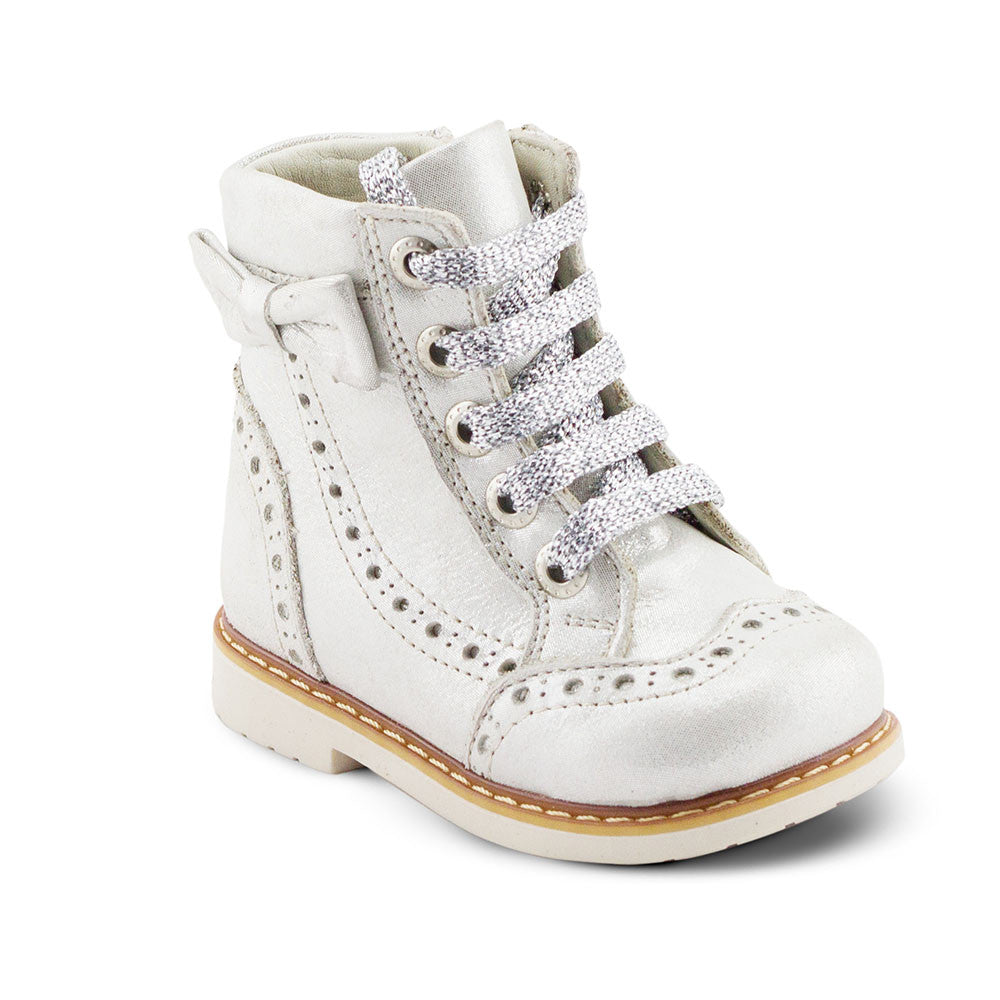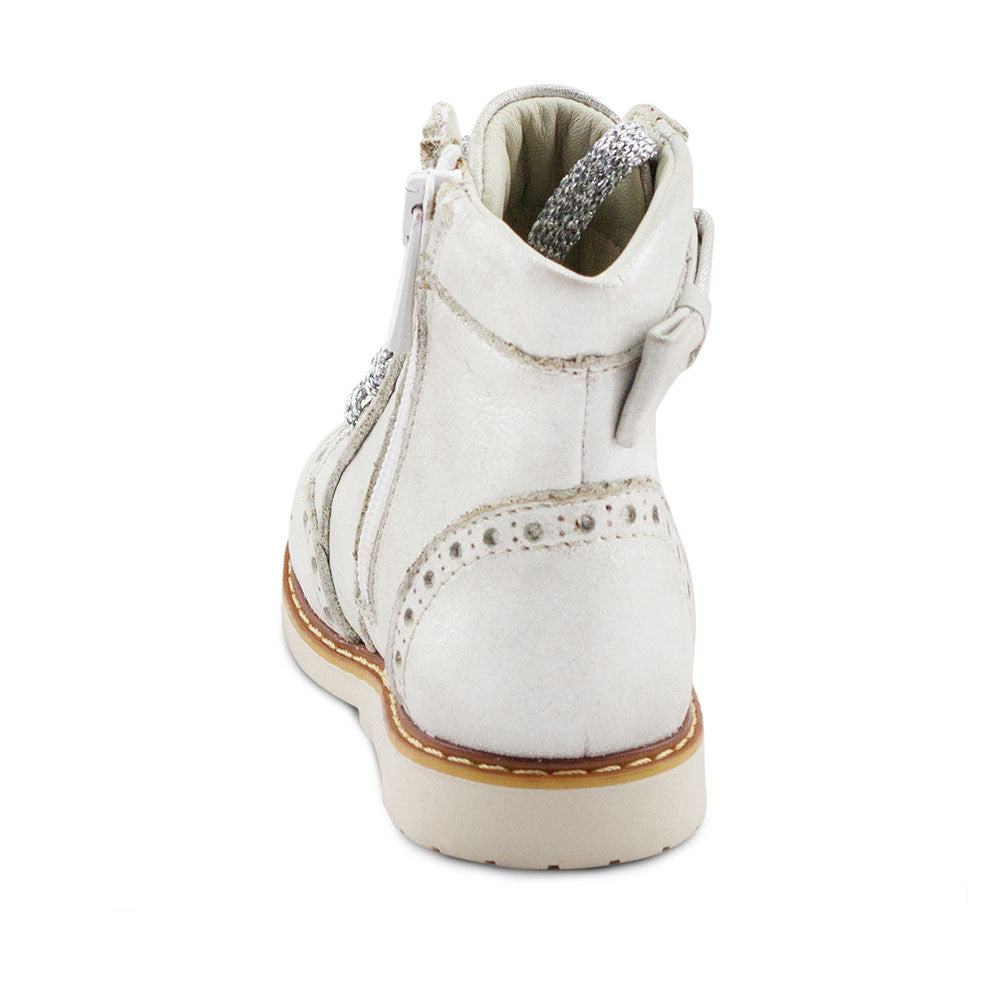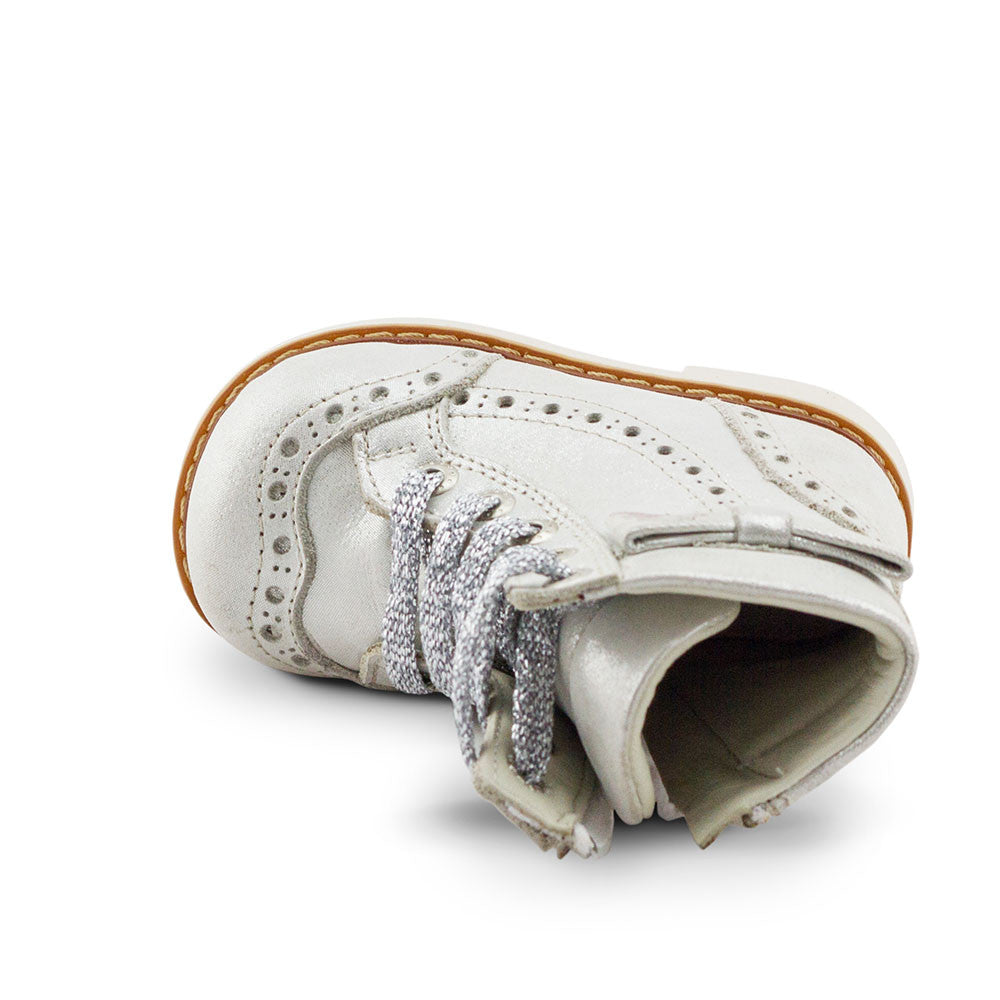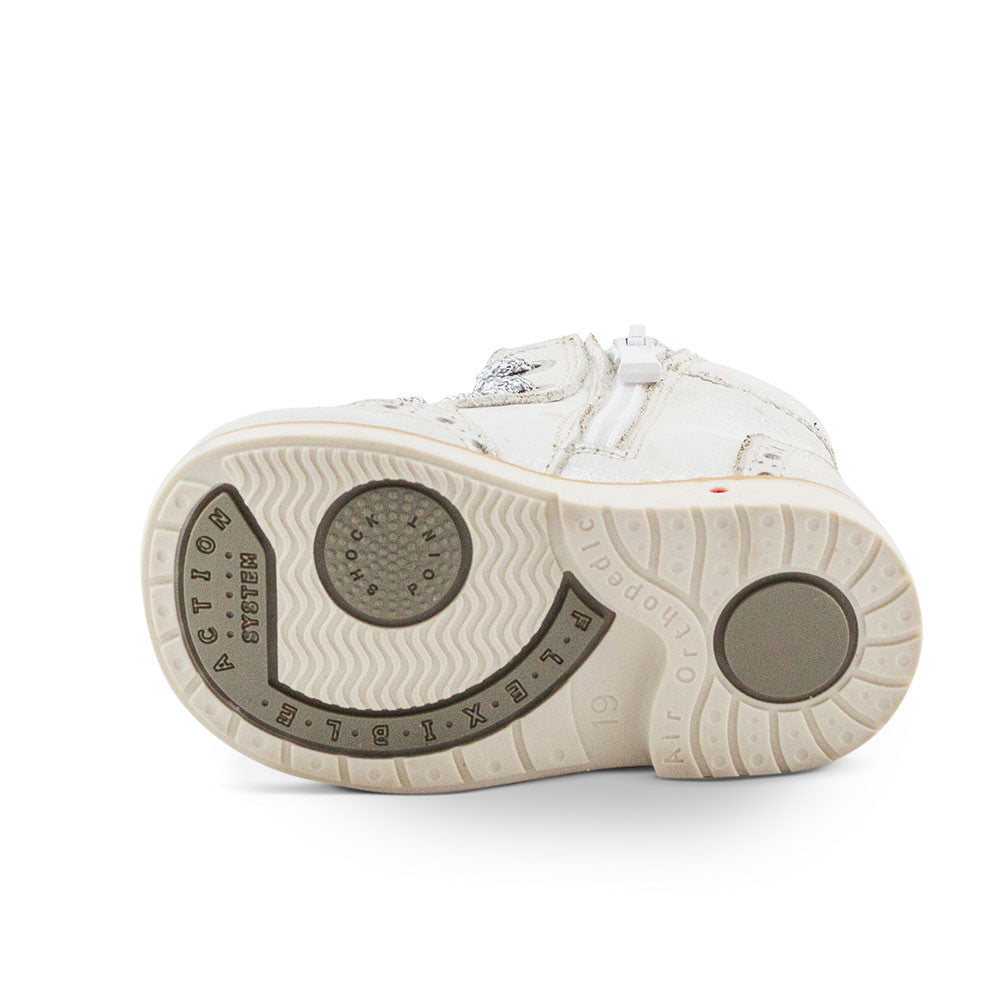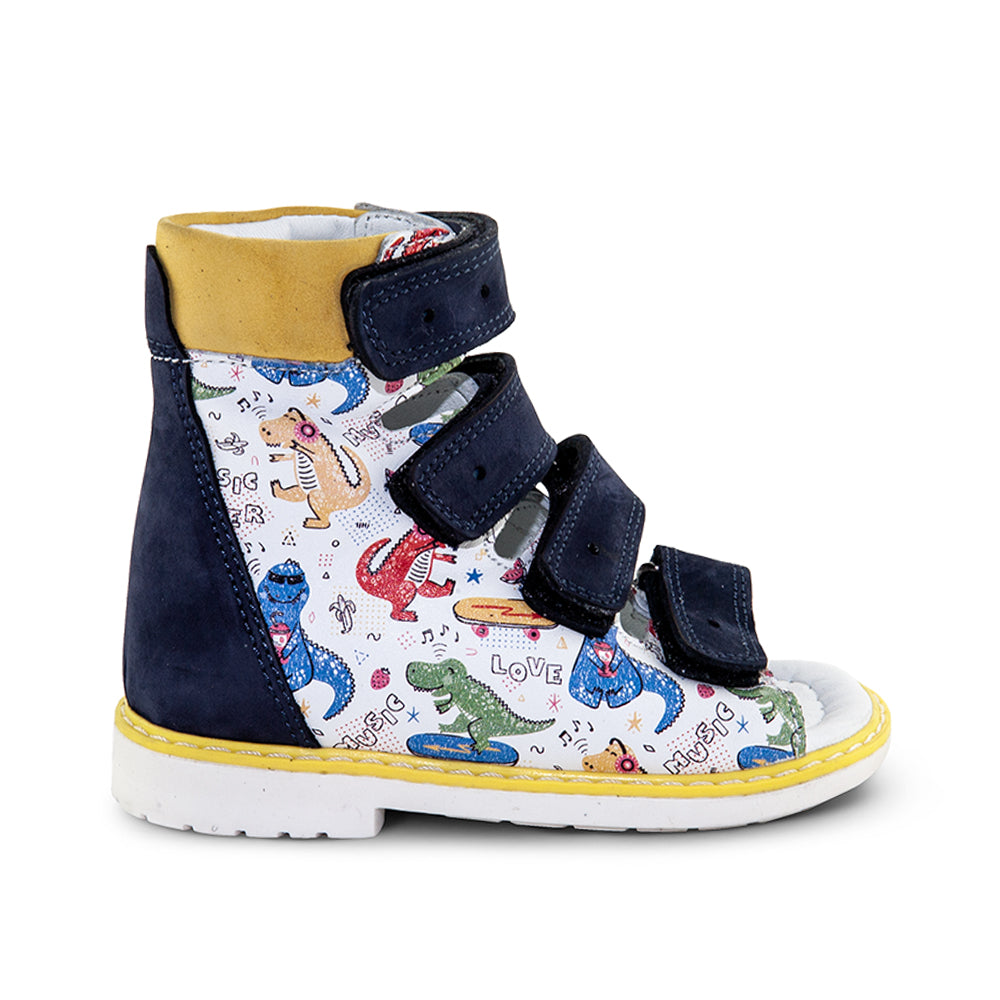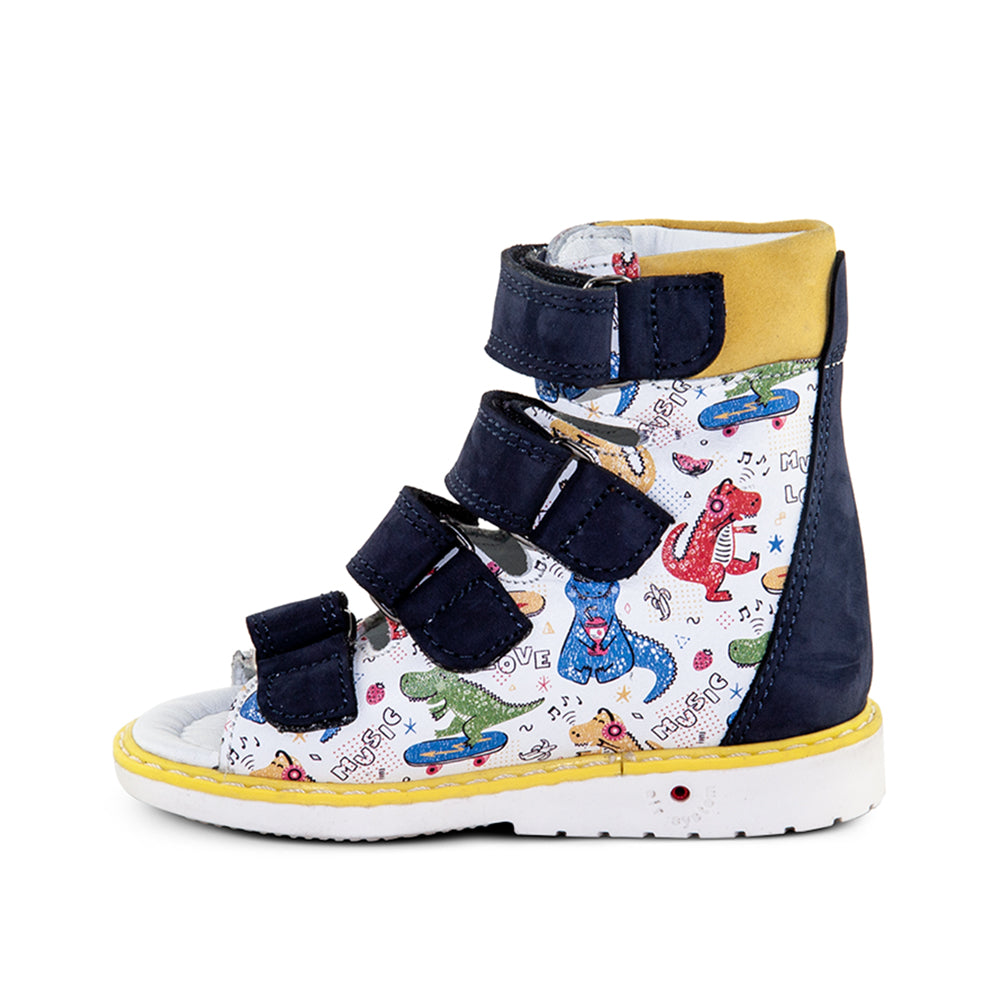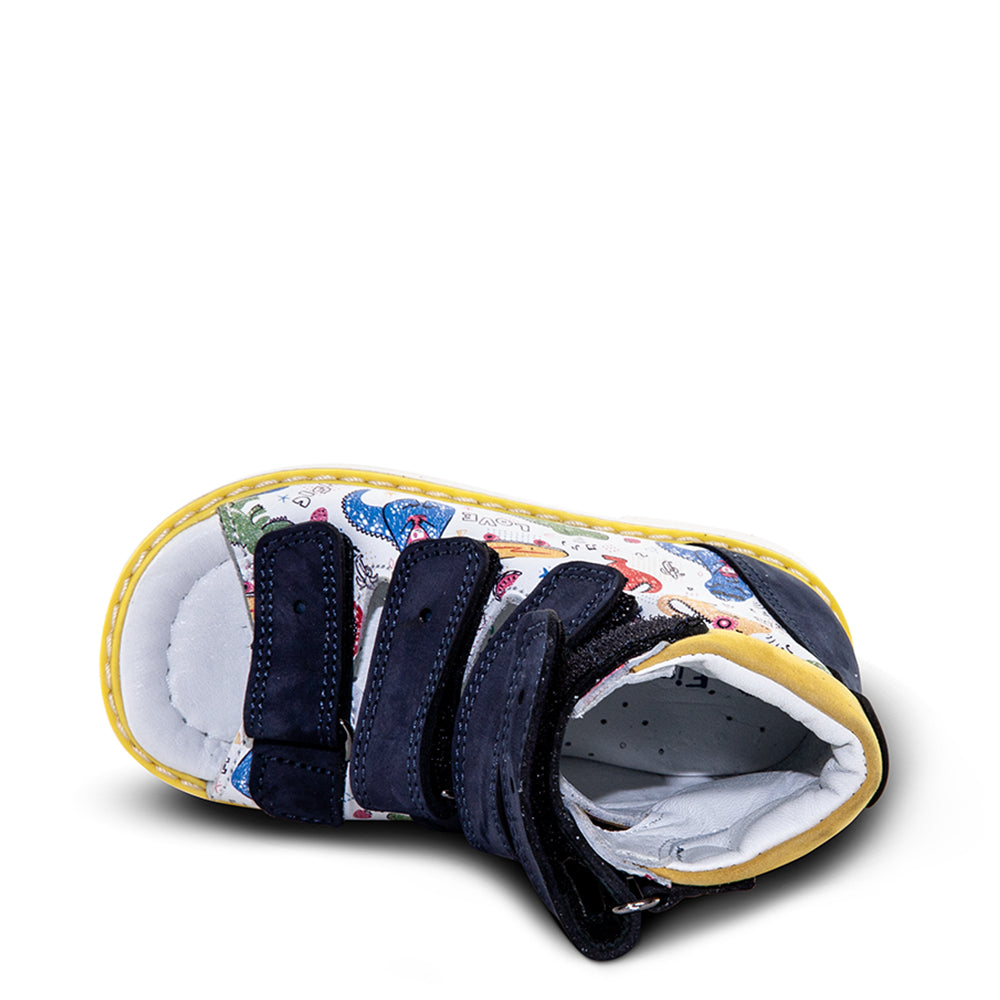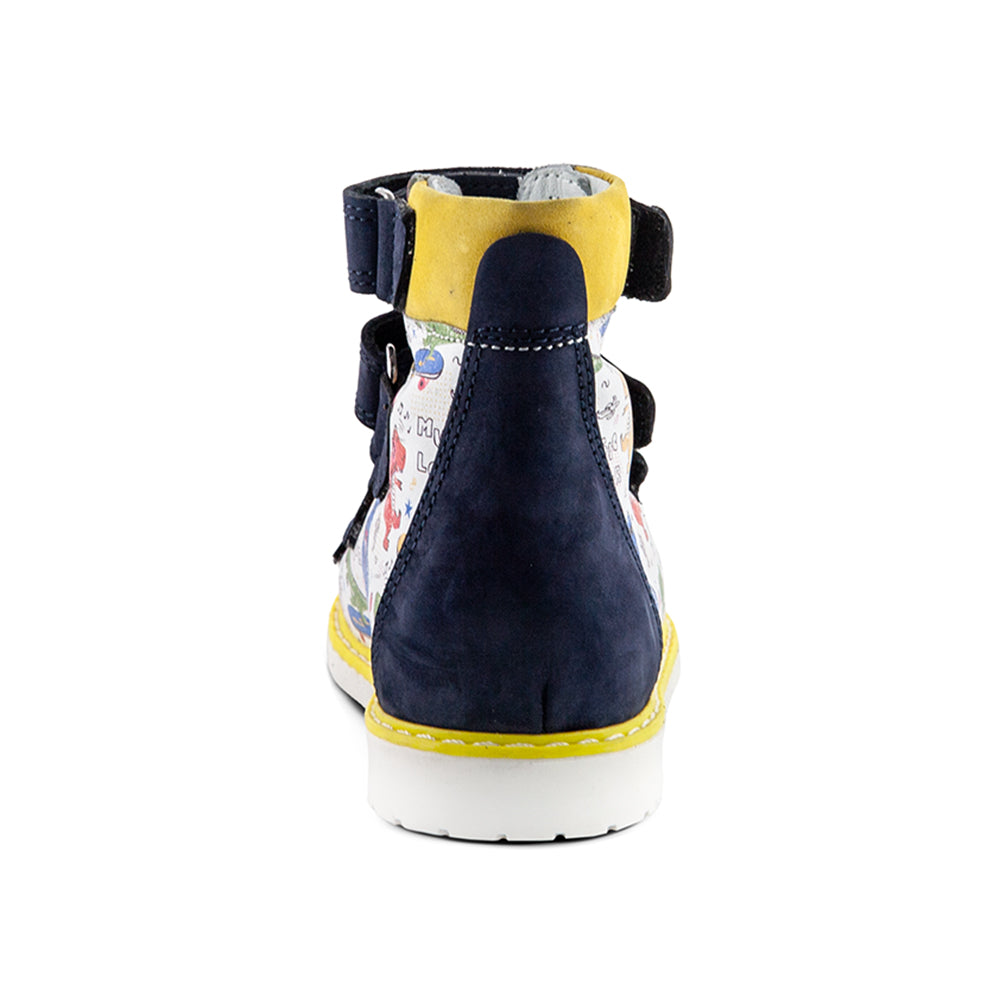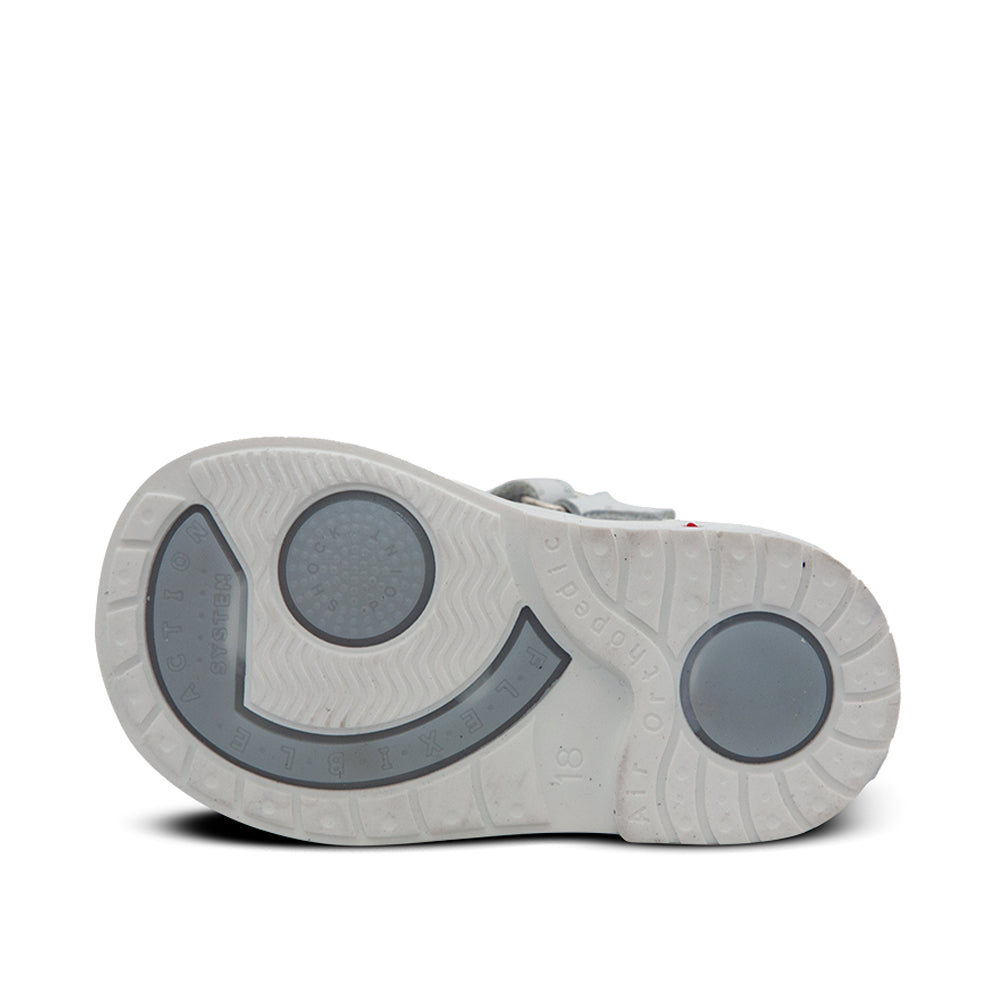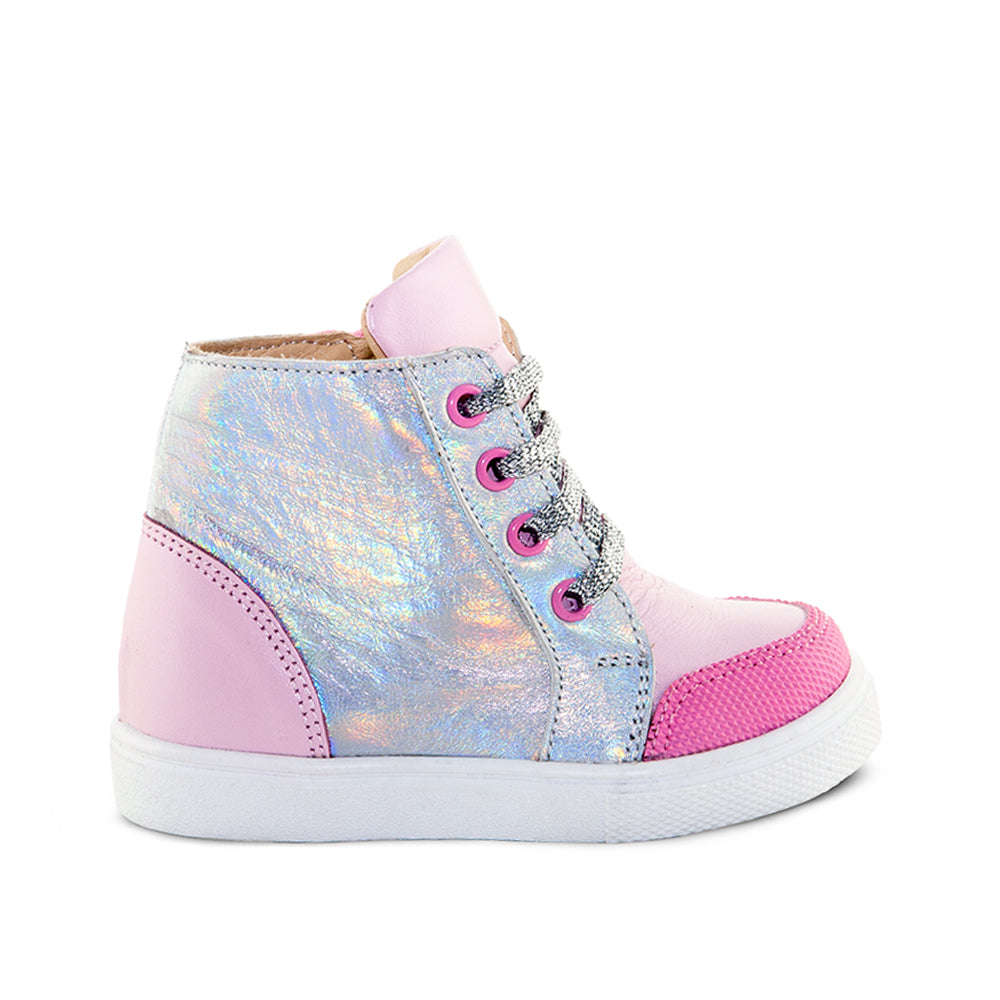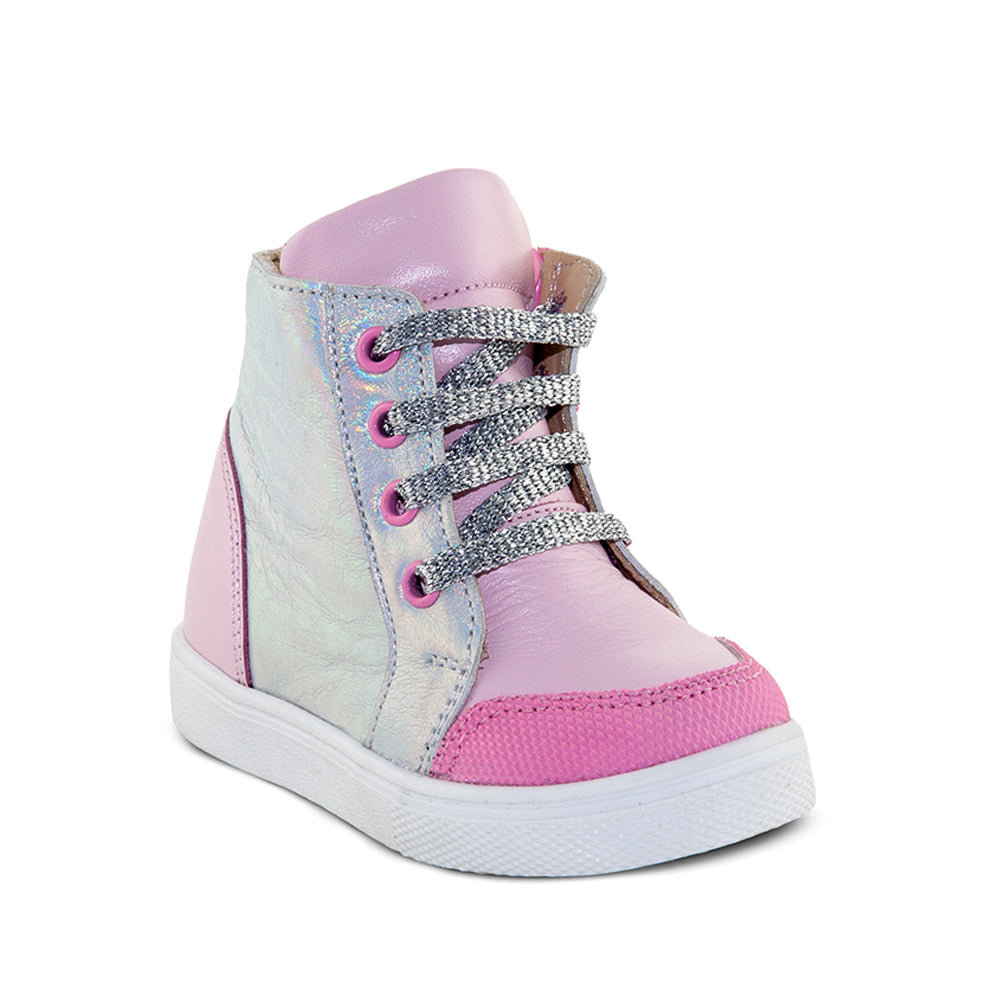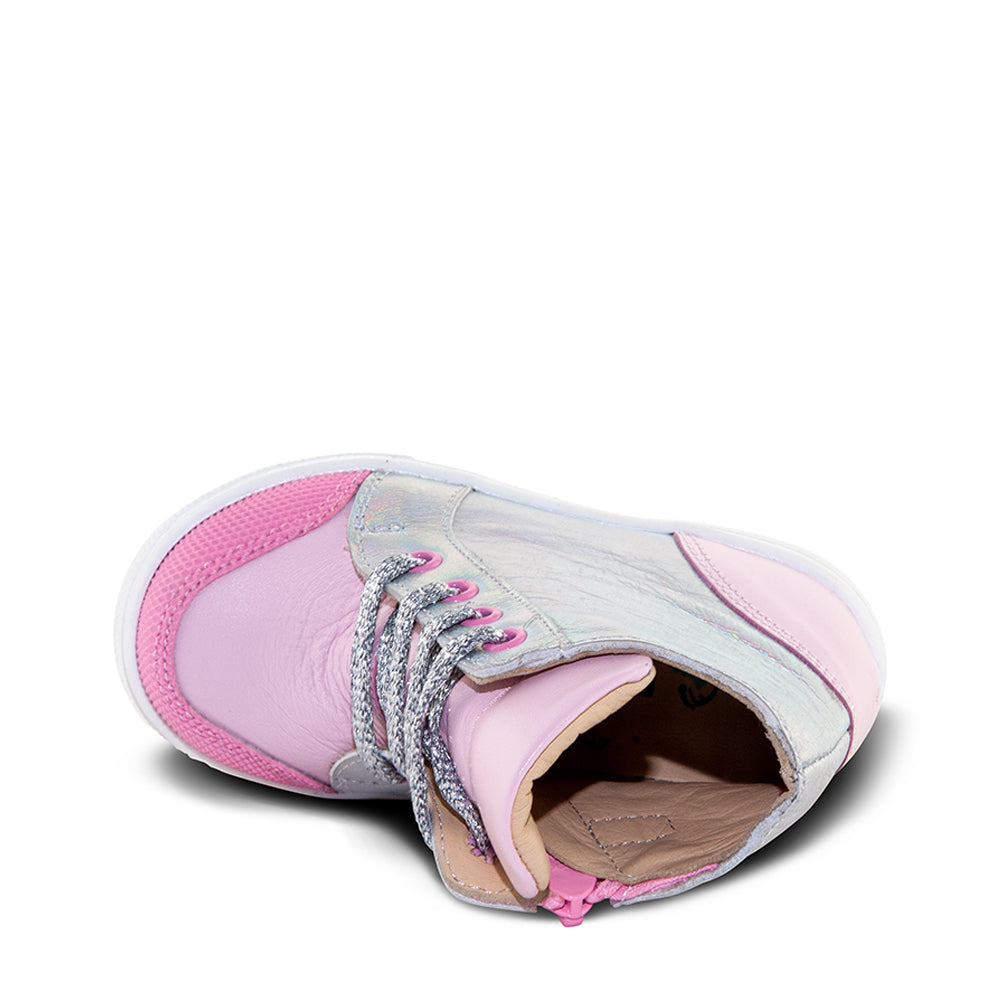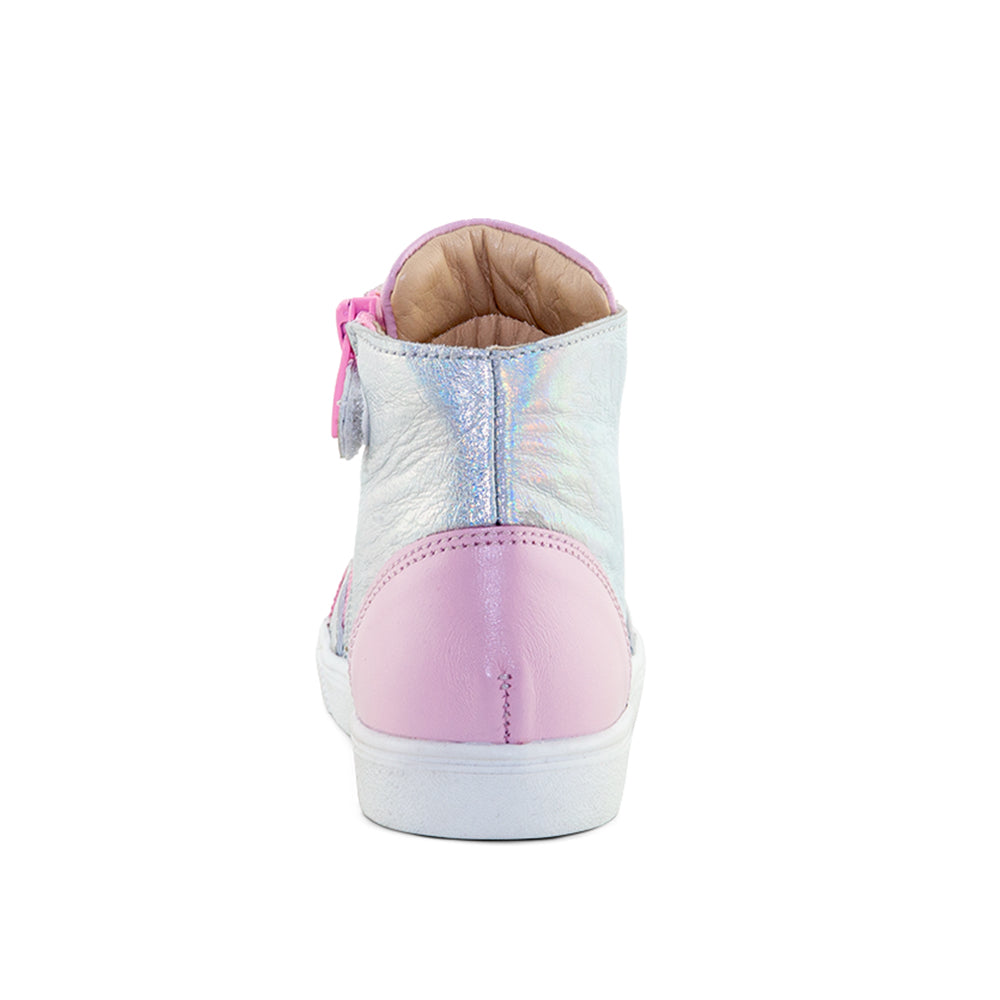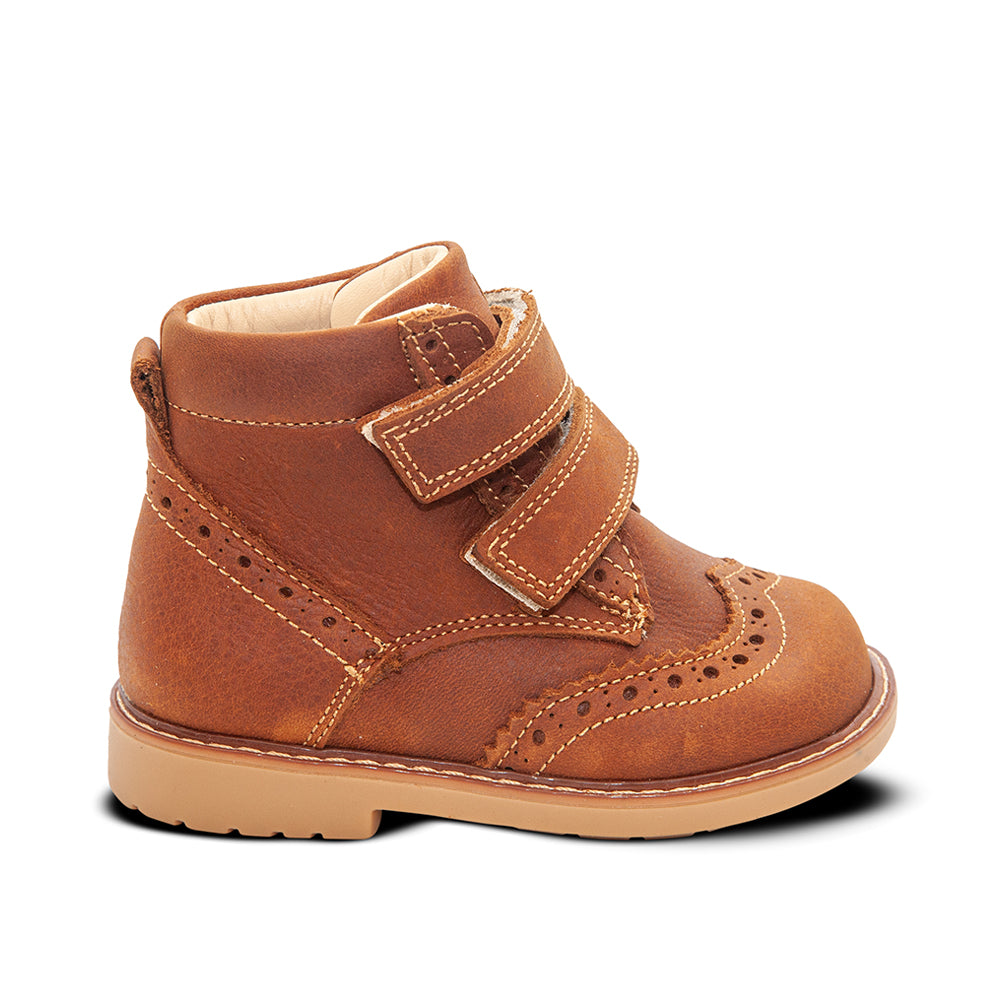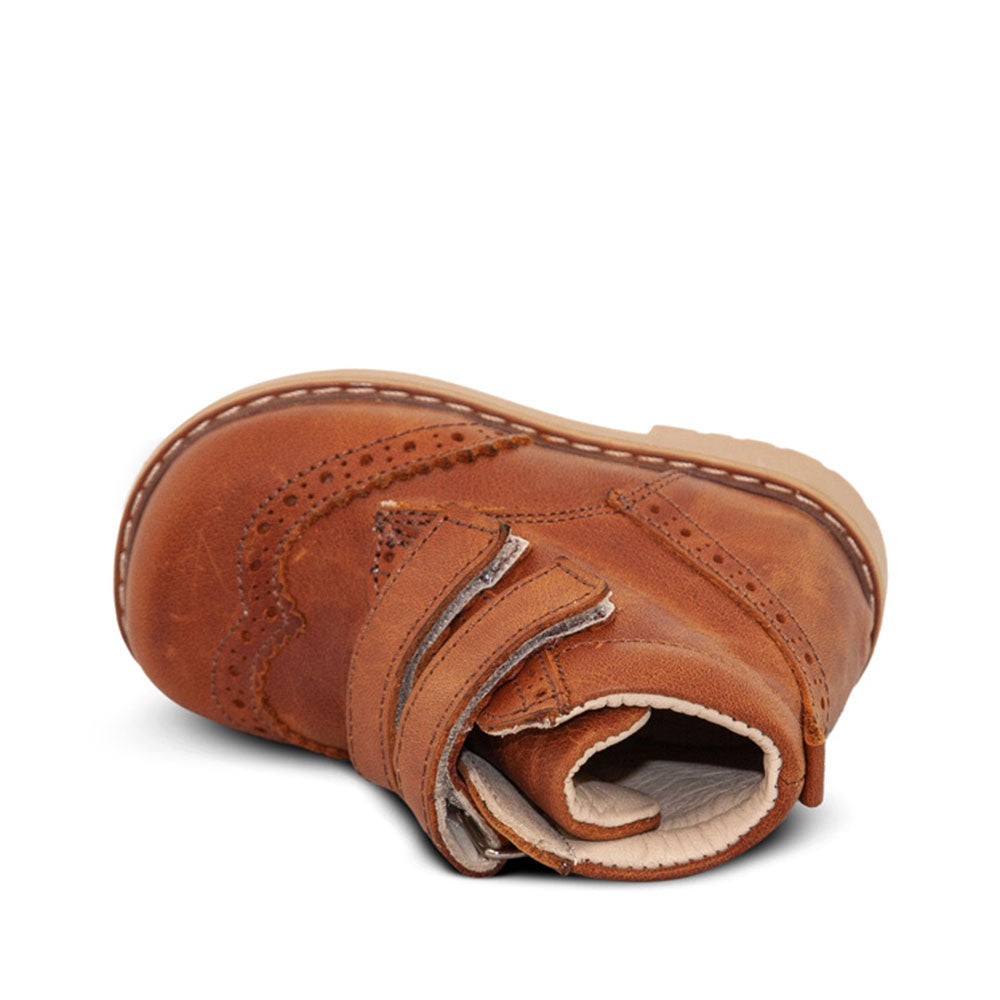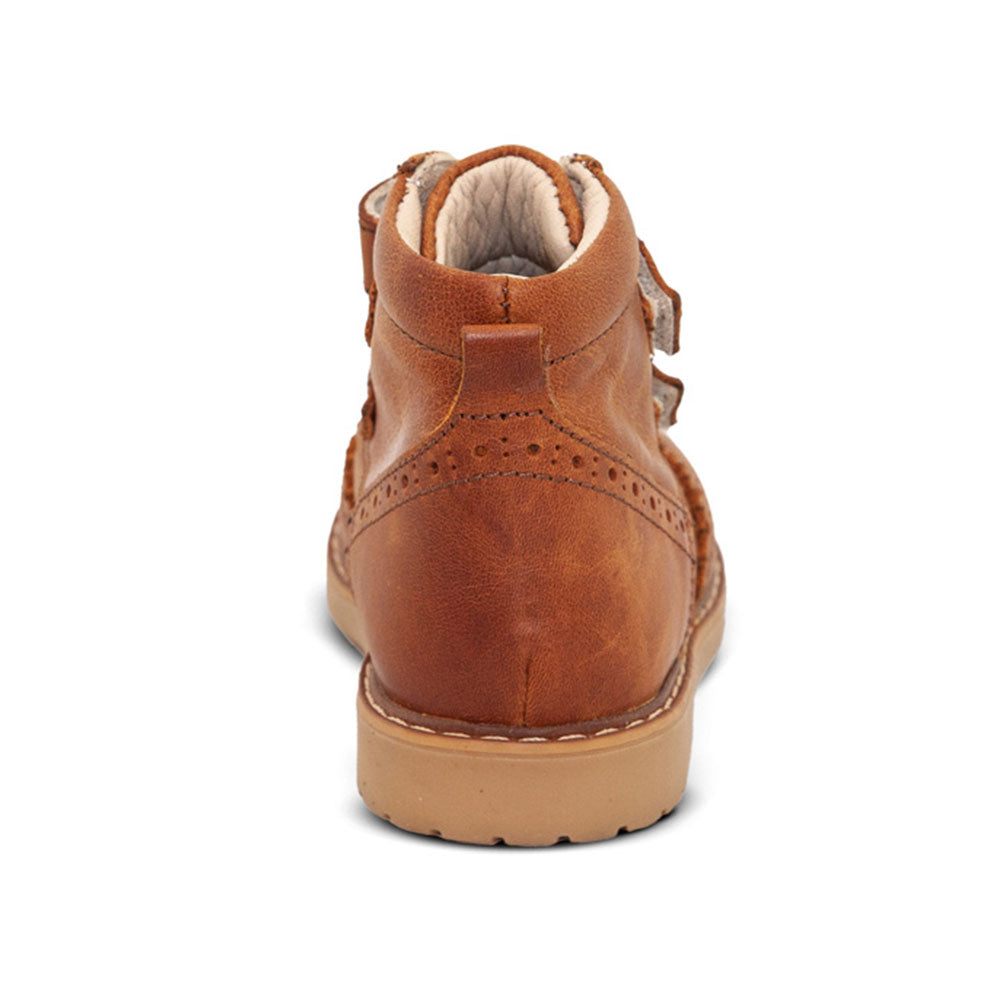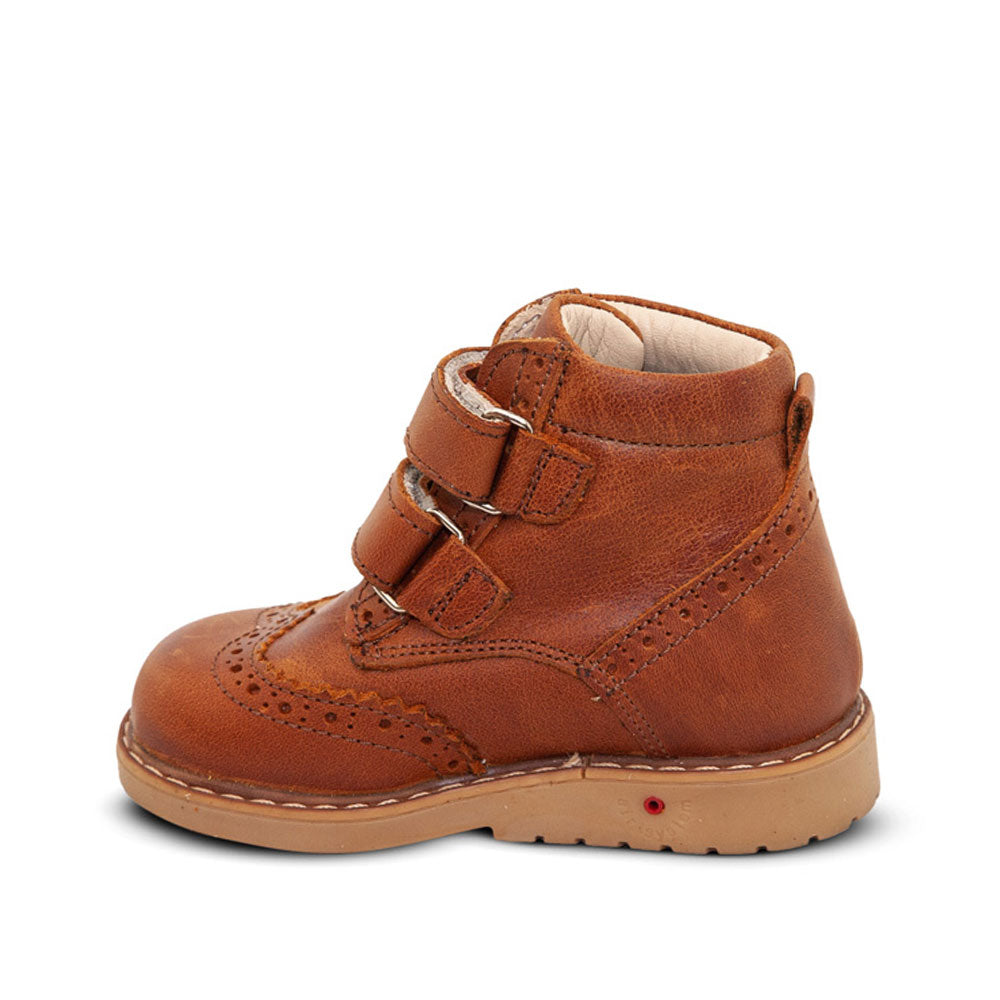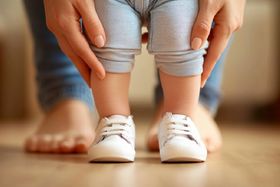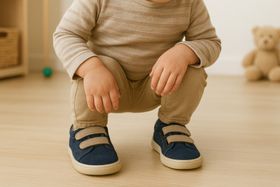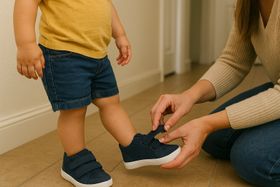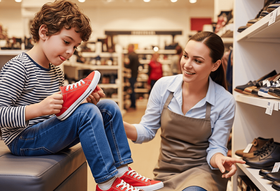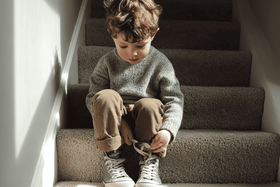10 Best Shoes for 6-Month-Olds: Soft Soles for Growing Feet
Your 6-month-old's feet are mostly soft cartilage and need flexible, breathable shoes that protect without restricting natural movement. Look for soft soles that bend easily, roomy toe boxes, and secure closures that won't leave marks on delicate skin.
Published August 2, 2025
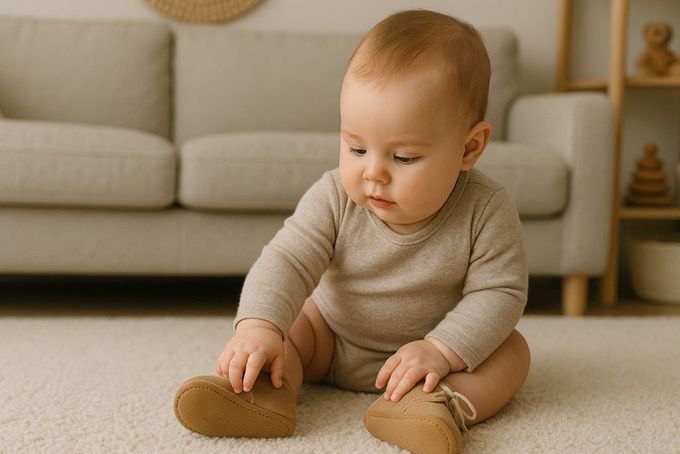
Your 6-month-old is hitting major milestones. Rolling over, sitting up, maybe even rocking on hands and knees. Those tiny feet are getting ready for bigger adventures, and now’s the time many parents start searching for the best infant shoes, or wonder if they should buy their baby’s first shoes.
But here's what most parents don't know: the wrong shoes can actually hurt your baby's foot development. At 6 months, your little one's feet are mostly soft cartilage. They need protection, not restriction.
This guide will help you learn exactly what to look for and which shoes support healthy development.
» Is your baby pulling up to stand? They will benefit from cruising shoes
Our Picks for the 10 Best Shoes for 6-Month-Olds
Do 6-Month-Olds Need Walking Shoes?
No. Your 6-month-old doesn't need walking shoes.
At this age, babies are just learning to sit, roll, and maybe pull themselves up. Their feet are still forming. The bones won't fully develop until they're toddlers. It's not yet time to get them them walking shoes with thick soles.
Here's what's happening inside those tiny feet: mostly soft tissue and cartilage. Only a few key bones like the heel and ankle bones are starting to harden [1]. Everything else is still flexible and growing.
Walking shoes with thick soles and rigid support can actually interfere with this natural development [2]. They prevent your baby from feeling textures and learning balance. Think of it like wearing thick gloves while trying to pick up small objects.
Your baby needs soft-soled infant shoes that act like a second skin. Protection from rough surfaces, temperature, and dirt, but nothing that restricts natural movement. Save the "real" shoes for when your little one is actually walking confidently. That usually happens between 12-18 months.
» Explore the pros and cons babies wearing walking shoes
5 Tips on Choosing the Best Shoes for 6 Month Olds
1. Soft, Flexible Soles Are Non-Negotiable for 6-Month-Olds
The sole should bend easily in your hands. If you can't fold it in half, it's too rigid for a 6-month-old. Soft soles let your baby's feet move naturally. They can grip, flex, and feel different textures. This sensory feedback is crucial for developing balance and coordination.
Look for materials like soft leather, flexible rubber, or thermoplastic that bends with each movement.
2. Breathable Materials Keep Their Feet Healthy
Baby feet sweat more than you think. Trapped moisture leads to rashes, irritation, and uncomfortable babies. Cotton, mesh, and soft leather allow air circulation. Avoid synthetic materials that don't breathe well.
Your baby's comfort level will tell you everything. Fussy, red, or sweaty feet mean the shoes aren't working.
» Curious about the next milestone? Get the best shoes for 12-month olds
3. Room to Grow Is Essential for Infant Shoes
Check the toe box; there should be about a thumb's width of space beyond your baby's longest toe. Cramped toes can affect proper development. Width matters too. Baby feet are naturally chubby. Shoes should accommodate this without squeezing.
Your baby's feet grow fast at this age. Check the fit every few weeks.
4. Secure but Gentle Closures Keep Your Baby's Feet Healthy
Velcro straps or soft elastic work best. They hold the shoe on without cutting into soft skin. Avoid anything that leaves marks or indentations. If you see red lines after removing shoes, they're too tight.
Easy on and off saves your sanity during diaper changes and outfit switches.
5. Anti-Slip Features Prevent Falls
Even non-walking babies benefit from grip. They're pulling up on furniture, standing with support, and exploring different surfaces. Look for textured soles, rubber grip dots, or suede bottoms. Nothing too aggressive, just enough traction to prevent slips on smooth floors.
» Check out our buyer's guide for toddler shoes
10 Best Shoes for Infants
What If Your Baby Skips Crawling?
Some babies skip crawling entirely. They go from sitting to pulling up and cruising. If this sounds like your baby, shoe choices should adapt.
These early standers put weight on their feet sooner than crawlers. Look for shoes with gentle ankle support and structured heel stabilization. A Thomas heel (a slightly extended heel area) helps with balance without restricting movement.
The sole should still be flexible. Stiff soles interfere with proper muscle and arch development even for early standers. Non-slip features become more important. These babies spend more time upright and need reliable traction on smooth surfaces.
Easy-on closures matter more too. You'll be putting shoes on and taking them off more frequently as your baby moves between different activities and surfaces.
» Find out when is the right time for your kid to wear hard soled shoes
Socks vs. Shoes: When Each Works Best
Socks alone work great for many indoor situations. During tummy time, crawling practice, or supported standing on safe surfaces, socks might be better than shoes.
For protection and development, choose non-slip grip socks. Look for ones with rubber dots or strips on the bottom. These provide traction on hardwood or tile floors without the bulk of shoes.
Cotton blends work best. They breathe well and stretch with movement. Avoid thick or tight socks that restrict circulation or prevent toe spreading.
Seamless designs reduce irritation for babies with sensitive skin. Save shoes for outdoor outings, unfamiliar surfaces, or when protection from temperature or rough textures is needed.
Right Shoes Support Your Baby's Development
Choosing shoes for your 6-month-old comes down to one key principle: protection without restriction. Your baby's feet are mostly soft cartilage at this stage. They need shoes that are like second skin, flexible enough to allow natural movement while protecting from rough surfaces and temperature.
The ten shoes we've covered each excel in different situations. Whether you need everyday wear like the Blooming Dahlia or summer comfort like Cluey Lucy, the best choice depends on your baby's specific needs and activities.
Remember the non-negotiables: soft, flexible soles that bend easily, breathable materials that prevent overheating, roomy toe boxes that allow natural growth, and secure closures that don't restrict circulation.
References:
- Y. Wang et al., “Understanding the role of children’s footwear on children’s feet and GAIT Development: A Systematic scoping review,” Healthcare, vol. 11, no. 10, p. 1418, May 2023, doi: 10.3390/healthcare11101418. Available: https://pmc.ncbi.nlm.nih.gov/articles/PMC10218108/
- C. Williams, J. Kolic, W. Wu, and K. Paterson, “Soft soled footwear has limited impact on toddler gait,” PLoS ONE, vol. 16, no. 5, p. e0251175, May 2021, doi: 10.1371/journal.pone.0251175. Available: https://doi.org/10.1371/journal.pone.0251175
Disclaimer: First Walkers' information is intended for educational and informational purposes related to toddler footwear and feet. We encourage you to consider individual circumstances and consult qualified orthopedists about specific conditions.
FAQs
What size fits a 6-month-old?
Typically, US baby shoe size 2 fits most 6-month-olds. Always check foot length and brand sizing.
What age do babies start walking?
Most babies start walking between 9 and 18 months.
When should babies start wearing actual shoes?
Babies should wear shoes once they start walking outdoors, usually after their first steps.
What size do babies wear the longest?
Many babies wear size 4 or 5 the longest, often between 12–24 months.
Where can I find affordable shoes for 6-month-olds?
Look for baby shoes on clearance sections at major retailers. Just be sure they meet the criteria for flexibility, breathability, and support.
Are barefoot shoes good for babies?
Yes. Many podiatrists recommend barefoot baby shoes; shoes with ultra-flexible soles that mimic natural foot motion.

